








Perhaps you may remember our previous Special Issue, which was created in collaboration with our partners at Certified Origins. In that issue, we aimed to provide retailers with a guide for sourcing EVOO. In this issue, our goal is to emphasize the importance of Origin.
Authenticity and traceability have been prominent topics in the grocery industry for several years, and for good reason. Retailers have discovered that these issues are important to their customers, who are increasingly concerned about the health of their families and the planet. This concern is especially strong among younger consumers, who have high expectations for these qualities in the products they purchase.
In reality, you can only be certain of a product’s authenticity and traceability if you know its origin. Origin applies not only to where the product comes from, but also to its history, including the land from which it came, the people involved in every aspect of its production, and the adherence to the rules and guidelines that are vital to maintain its heritage.
Before reading the articles that follow, my insight and understanding of origin was admittedly limited. I had a basic understanding of geographic rules and regulations. I knew that you couldn’t “produce” “Prosciutto San Daniele” in Cleveland, Ohio - or anywhere outside of San Daniele, Italy. I was aware that authentic San Marzano tomatoes had to be “grown” in San Marzano, etc.
But my understanding ended there.
After reading this issue I now understand that “origin” refers to more than just a location; it also encompasses the historical context and the circumstances in which something was first produced. This includes factors such as the land, climate, labor, and many other elements that become evident upon further exploration.
Origin defines a product and process. More substantially, it can protect it so that it can sustain the land and people who rely on it. So origin is not only about taste and providence, it is a reminder that people can sustain themselves and their planet. It just takes a little bit of ingenuity. You’ll find plenty of it in this issue, beginning with our partner, Giovanni Quaratesi’s feature on the Evolution of Modern Retail on page 8.
I’d like to thank our authors for lending their knowledge and passion to this issue and for the work they do, Giovanni Quaratesi and his colleagues Miljana Tosic, Madeleine Côté for their collaboration and diligence and Melissa Subatch for pulling it all together.
Enjoy the issue and kind regards,
Phillip Russo Founder / Editor phillip@globalretailmag.com

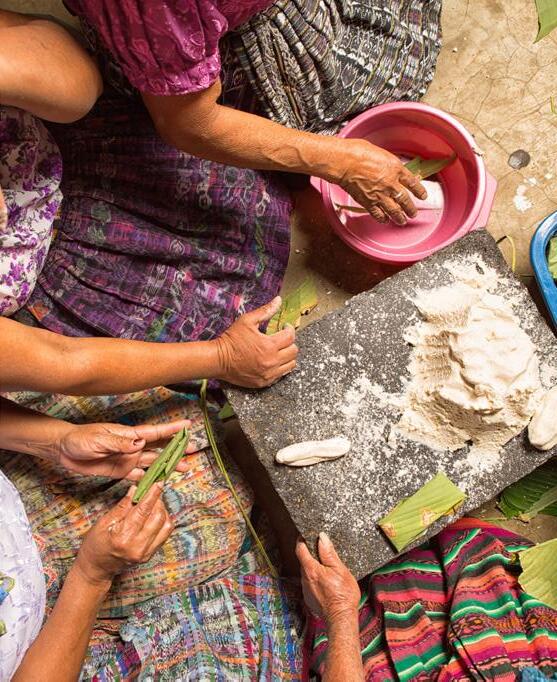
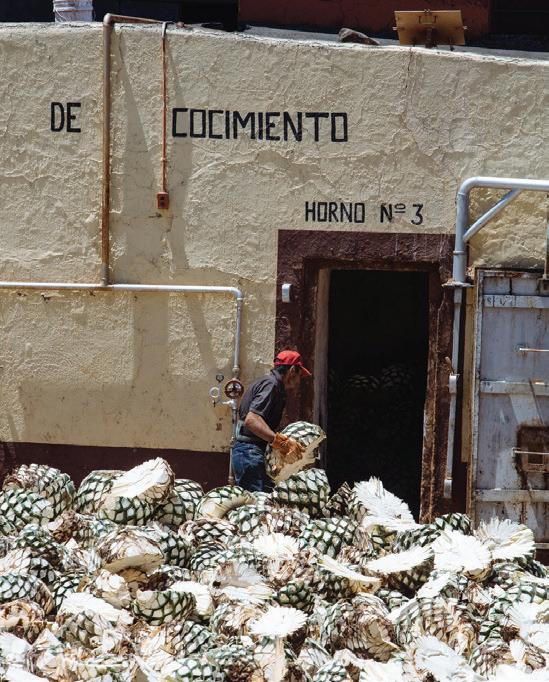


Nurturing Sustainability
Protecting Growers of Sustainable Foods
Back to the Roots to Move Forward
The Artisanal Food Renaissance
30 Prosciutto: A Celebration of Italian Tradition 34 Acorn Fed Iberico Ham
40 Extra Virgin Olive Oil 46 Single Origin EVOO
52 The Global Impact of Avocados
56 Tequila, a Rich Heritage of Mexico 60 Saffron from la Mancha
Authentic Experiences: Good Business for Independent Grocers 68 Preserving Authenticity and Embracing Healthier Choices 72 PR’s Role in Promoting Italian Foods’ Provenance
76 Waste Not, Package Smart
80 Protection and Promotion of Origin-linked Products as Geographical Indications 84 Quality Departments’ Role in Improving Food Safety and Authenticity
88 Blockchain in Agrifood: Transparency and Security for the Food Supply Chain
92 It’s from the Soil that Sustainable Food Systems Must Sprout 96 Supply Chain Traceability Certifications 100 Resolute Resilience for a Warming World

GIANNI BALDINI
Gianni Baldini is a Food Sector Manager at Bureau Veritas Italia - Certification division. He has been working in the agri-food sector for over 30 years as an expert in food safety and management of animal and vegetable supply chains. Since 2004, he has been a consultant and auditor for all voluntary certifications related to the sector.In 2012, he joined the Bureau Veritas Italia Group, where he has been responsible for the food certification sector since 2015.

ALMUDENA PIZA BARROSO
Almudena Piza Barroso is a food scholar and writer who specializes in the history and development of the avocado industry in Mexico and the United States. She holds a Master’s degree in Food Studies from NYU Steinhardt, a Bachelor’s degree in Applied Food Studies, and an Associate’s Degree in Culinary Arts from The Culinary Institute of America. She currently resides in Mexico working on agricultural trade research.

GIORGIO BERTOLINI
Giorgio Bertolini is a manager and entrepreneur active in the sustainability and food tech industry. He is Managing Director of ClimatePartner Italia a growing organization that supports companies achieve net zero emissions and to contribute to preserve and restore nature through certified projects.

ANDREA BIAGIANTI
Andrea Biagianti is the IT Manager at Certified Origins Italia. Born in Grosseto in 1978, Andrea has harbored a deep passion for computer science since childhood, which led him to pursue technical studies in his hometown and refine his expertise in Rome. During his academic journey, he developed an application for information protocol and document archiving for technical studies aiming for ISO 9001 certification.

PETER CROCE
Peter Croce leads the digital product team at Probable Futures, speaks to public audiences, and builds partnerships to help people live well and act with confidence in our changing world. Probable Futures makes climate literacy resources and climate maps available online for everyone, everywhere. To begin exploring, visit probablefutures. org. The maps included in the article, and many more, are available at probablefutures.org/maps.

Silvia D’Alesio is a food and packaging expert as well as an international scouter on food innovation, leading several projects regarding developing new food and beverage products and businesses. She has earned a BSc. in Food Sciences and Technology along with an International MSc. in Food Innovation and Product Design. Her work includes research projects and scientific direction for Digital Food Ecosystem and FoodTech European Events; assistant professor at the University of Milan Department of Nutrition and Environment; and Professor of Futures Studies and Brand Packaging Design at NABA, Milan.

GREG FERRARA
Greg Ferrara is president and CEO of the National Grocers Association, the national trade association representing the retail, wholesale and supplier companies of the independent sector of the supermarket industry. With NGA since 2005, Ferrara brings a wealth of experience in the grocery industry, having managed his family’s century-old supermarket in New Orleans before the store was destroyed by Hurricane Katrina.

PIER PAOLO GHELFI
Pier Paolo Ghelfi, a dedicated Export Manager at Ferrarini, has been with the company since 1985, celebrating his 40th anniversary next year. After initially focusing on commercial development in Italy, Pier moved to Madrid in 1992 to establish Ferrarini’s presence in the Spanish market. Pier’s unwavering goal has been to position Ferrarini as the benchmark for uncompromising quality in Italian cured meats, particularly through its flagship product, il “Prosciutto Cotto Ferrarini,” which pioneeredin Italy - the production of the first cooked ham without added polyphosphates.
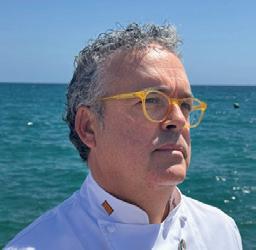
JORDI JARDI
Jordi Jardi Serres is a Technical Specialist in Hospitality and Tourism, specializing in Kitchen Specialty at INS Escola Hospitality and Tourism in Cambrils. With over three decades of experience, he has served as a Teacher of cooking and gastronomy and held various leadership roles including Director and Head of Studies. His culinary career spans roles as a cook at notable establishments in Catalonia, including Restaurant Eugènia and Fonda Turú. He also co-owns Restaurant Casal de Miravet and hascontributed to gastronomic innovation projects with Griffith Foods.

PEDRO MANUEL PÉREZ JUAN
Pedro Manuel Pérez Juan obtained a Doctorate in Chemical Sciences from the University of Córdoba, in Spain. He is a consultant and trainer in the agri-food sector, specializing in food quality and safety. He managed the La Mancha Saffron PDO from December 2013 to February 2023.

KAMI KENNA
Kami Kenna completed a master’s degree in Food Studies from New York University where her focus was on the traditional beveragesof Latin America, Kami Kenna has lived in Latin America for work since 2015. She is the Senior Tour Coordinator for Experience Agave, a boutique agave-spirits tour company in Mexico, an owning-partner of the women-owned Peruvian pisco brand, PiscoLogía, and a Pan-American beverage industry consultant with clients in Peru, Mexico, and Brooklyn.

CLAUDIA LARICCHIA
Professor Claudia Laricchia, CEO of Smily Academy,leads initiatives that bridge traditions and innovation. A G7 Advisor for gender equality (W7), anda Professor at the European Institute of Innovationfor Sustainability, she champions the harmonious coexistence between nature and human innovation. Learn more about Smily Academy’s transformative journey at: www.smilyacademy.org

ALBERTO MARRASSINI
Alberto Marrassini has been part of the Coop Italia group for over 20 years. Since 2019, he has been the CEO of Coop Italian Food North America and Italian Food Canada. Prior to this role, Alberto led the Asian global sourcing team Coop Far East, with over ten years of assignment in China, Hong Kong, and Vietnam, in the development of Coop Non-Food private label products. Earlier in his career, he held several positions in purchasing and sales across the Non-Food spectrum.

LUCIA MAZZI
Lucia Mazzi holds a degree in Technologies and Analysis of Ecotoxicological Impacts from the University of Siena, Italy. In 2010, she obtained an academic scholarship for a Doctorate in Medical Biotechnology, completed her PhD in 2015, and passed the state exam for Biologists in 2014, enrolling in the Professional Register the following year. During her career, she had the opportunity to broaden and share her knowledge through positions at various analysis laboratories and by teaching scientific subjects in schools. Since 2016, she has worked with Certified Origins Italia Srl, becoming a global quality and food chemistry specialist and leader in her field, collaborating with Universities and various institutions.

DANIELLE NIERENBERG
Danielle Nierenberg is a world-renowned researcher, speaker, and advocate on all issues relating to our food system and agriculture. In 2013, Danielle Nierenberg co-founded Food Tank (foodtank.com) with Bernard Pollack, a 501(c)(3) nonprofit organization focused on building a global community for safe, healthy, nourished eaters. Danielle has an M.S. in Agriculture, Food, and Environment from the Tufts University Friedman School of Nutrition Science and Policy and spent two years volunteering for the Peace Corps in the Dominican Republic. Danielle is the recipient of the 2020 Julia Child Award.

JUAN VICENTE OLMOS
Juan Vicente Olmos Llorente is a General Manager of Grupo Monte Nevado. Belonging to the 4th generation of Monte Nevado, and being veterinarian by training, he is a tireless researcher of the world of ham. He is wellacquainted with numerous ham facilities across Spain and has experience working in several in Italy, Germany, Belgium, Portugal, and the USA. Additionally, he has written three books on ham and the Iberian pig.

FABIO PARASECOLI
Fabio Parasecoli is Professor of Food Studies in the Nutrition and Food Studies Department at New York University. His research explores the cultural politics of food, particularly in media, design, and heritage. Recent books includeKnowing Where It Comes From: LabelingTraditional Foods to Compete in a Global Market (2017), Food (2019), Global Brooklyn: Designing Food Experiences in World Cities (2021, coedited with Mateusz Halawa), Gastronativism: Food, Identity, Politics (2022), and Practicing Food Studies (2024, coedited with Amy Bentley and Krishnendu Ray).

STEPHANE PASSERI
Stephane Passeri is a French expert in Geographical Indication (GI). He currently leads regional GI projects for the FAO in Asia and the Pacific from Bangkok, Thailand. With over 25 years of experience, he has significantly shaped Intellectual Property Rights and GI frameworks across numerous Asiancountries. Since 2013, he has managed several FAO projects to promote rural development through GIs in the region. In 2017, he was awarded the Knight of the Order of Agricultural Merit by the French Government for his contributions to agriculture. Mr.Passeri holds advanced degrees in Economics and Finance from the Universityof Nice-Sophia Antipolis.

EMILY PAYNE
Emily Payne has served as editor of the global sustainable food nonprofit Food Tank since 2015. Her writing covers the intersection of food, agriculture, climate, and health and has appeared in GreenBiz, Edible Magazines, The Counter, Mad Agriculture Journal, AgFunder News, FoodUnfolded, Thomson Reuters Foundation, Inter Press Service, the New York City Food Policy Center, and more. She is based in Denver, Colorado.

JOSEPH R. PROFACI
Joseph R. Profaci has served as Executive Director of the North American Olive Oil Association since October 2017. He is an experienced food products attorney and business manager, with almost 30 years of experience in the olive oil category. Previously, he served as general counsel for Colavita USA, LLC, a leading importer and distributor of Italian specialty foods. He was an active representative for Colavita to the NAOOA, serving on the board for 4 years, including serving as the NAOOA chair from June 2015 - June 2017. Mr. Profaci is a graduate of Harvard College and New York University School of Law.

GIULIA PEROVICH
Giulia Perovich is the passionate founder of Arnald NYC, a PR and communications boutique agency fueled by her EmiliaRomagna roots and lifelong love of hospitality. Named after her favorite childhood eatery, Arnald NYC embodies Giulia’s commitment to crafting client experiences through targeted messaging, strategic networking, media planning, and storytelling across multiple platforms. Among her current clients are Acetaia Giusti, Consorzio del Parmigiano Reggiano, Giadzy by Giada De Laurentiis, Ferrarini, and Palazzo di Varignana. www.arnaldnyc.

GIOVANNI QUARATESI
Giovanni Quaratesi is the Head of Corporate Global Affairs at Certified Origins, leading the company’s communication strategies and public relations. His mission is to be an ambassador for good food and to empower others to create positive change in the food system.

SARA ROVERSI
Sara Roversi is an experienced entrepreneur and thought leader in the food ecosystem. As a seasoned growth expert, she works with globally recognized high-profile think tanks on setting the agenda for the sustainable food industry. With her Future Food, founded in 2014, she is the Focal Point of the UNESCO Emblematic Community for Mediterranean Diet, Pollica (Cilento). She is the co-founder of goodaftercovid19.org, Ambassador of the Agrifood Tech & Wellbeing (Federated Innovation project @MIND), President of the Scientific Committee of Fondazione Italia Digitale, member of the Google Food Lab, and partner of the Food For Climate League.
BY GIOVANNI QUARATESI
The history of grocery stores in the United States dates back to the early colonial period when European settlers relied on local markets, general stores, trading spots, and small farms to obtain provisions they could not produce or source independently. Over the years, some family-owned stores have maintained their original spirit while others have evolved into complex institutions with a wide range of local and imported products, services, and sales strategies as we know and experience them today.

American retail began with small, local stores offering a limited product range. Shoppers would communicate with one or more clerks, separated by a counter, to inquire about products and convey their preferences. The store owner or their staff would be the sole trustworthy source of information about the origin, nature, and price of the goods, and they would be responsible for displaying, weighing, portioning, and packaging the loose goods. Social factors such as religion, race, gender, and social status would likely influence and shape the interactions between the store staff and the customers.
As the country evolved in its cultural diversity and global outreach, and entered its industrialized phase, there was a growing opportunity for new and more efficient shopping experiences. The early 20th century saw the introduction of a wide range of pre-packaged, shelf-stable, refrigerated, and frozen foods. This significantly transformed how Americans shopped and their relationship with food, contributing to the modern retail landscape.

“The
growth of large-scale retail has also led to an increase in the distance from which food is sourced, which has diluted our understanding of the origins of our groceries.”
The first supermarket, Piggly Wiggly, opened in Memphis, Tennessee in 1916. This store, founded by Clarence Saunders, introduced and patented the concept of self-service shopping, offering mostly pre-sized and packaged food, eliminating the need to interact with others to get what you need. Customers could browse through aisles, select their desired products, and bring them to a checkout counter. This innovation sped up the shopping process and gave customers a new sense of autonomy and satisfaction.
Following the success of Piggly Wiggly, other supermarkets quickly adopted and expanded upon Saunders’ innovation. The 1930s saw the emergence of chain supermarkets like Safeway and A&P, which capitalized on economies of scale to offer lower prices and a wider variety of products. These stores introduced new practices such as shelf price labeling, product advertising, and shopping carts, further enhancing the customer experience.
In the post-World War II era, supermarkets continued to evolve, incorporating technological advancements to streamline operations and improve customer service. The introduction of computerized
inventory management, barcode scanning, and electronic payment systems in the latter half of the 20th century revolutionized retail efficiency and accuracy. These innovations allowed supermarkets to manage more extensive inventories, reduce costs, and offer a broader selection of goods.
Modern retail has brought many benefits to the American population, such as convenience, variety, and affordability. As of 2021, the U.S. food and grocery retail industry employed 2.89 million workers and generated $880 billion in sales, with major players like Walmart, Amazon, Costco, and Kroger leading the market. The sector boasts over 63,000 stores nationwide, reflecting its extensive reach and importance.
The growth of large-scale retail has also led to an increase in the distance from which food is sourced, which has diluted our understanding of the origins of our food. As a result, it has become increasingly challenging for the average person to find clear answers to fundamental questions such as who created it, its geographical origin, the production process, and the philosophy behind it.

Today, the average grocery store carries over 39,000 items, and the median size of a U.S. grocery store is almost the size of a football field. The COVID-19 pandemic accelerated the adoption of online grocery sales, which now account for over 10% of food grocery sales. While this shift has improved convenience and access in underserved areas, it has also created a greater disconnect between consumers and their food source.
The evolution from local markets to modern supermarkets has prioritized efficiency and cost reduction, often at the expense of supply chain transparency and education.
In this special edition of Global Retail Brands magazine produced by Certified Origins, with the invaluable support and contribution from a number of world-class food experts, we will explore the importance of understanding where our food comes from and how reconnecting with the origins of our nutrition can lead to better choices, a more sustainable future, and resilient economies.
Join us in understanding more about the history, the present, and the future of food and uncovering the stories behind the ingredients that fuel our health and happiness.




Giovanni Quaratesi is the Head of Corporate Global Affairs at Certified Origins, leading the company’s communication strategies and public relations. His mission is to be an ambassador for good food and to empower others to create positive change in the food system.

BY CLAUDIA LARICCHIA
In a world where choices reverberate globally, understanding the intricate tapestry of food origins becomes paramount.
Guardians of biodiversity and climate, particularly Indigenous Peoples, play a pivotal role in safeguarding our planet’s delicate balance. At 5 years and less than 100 hundred days marked by the climate clock as deadline for the climate collapse, humanity needs to merge traditional Indigenous wisdom with innovative solutions, acknowledging the need for harmonious coexistence between nature and human endeavors. These ingredients must be aimed to invest in the next generations for a regenerative future.
As we transition from the Sustainable Development Goals (SDGs) of the Agenda 2030, the Indigenous Factor becomes integral to sustainability’s 4th dimension - the inner dimension, meaning the consciousness transformation process that allow humanity (including entrepreneurs) to reconnect with themselves at first, for changing mindset and afterwords rapidly design new sustainable and regenerative development models. This further dimension is now crucial for training a new class of ecopreneurs as the current tools, kpi and methodologies are simply not enough anymore for tackling such a severe anthropocentric climate emergency.

Indigenous Peoples, meaning 5% worldwide population, protect 85% of biodiversity at a global level, extending their crucial custodianship beyond ecological preservation to the heart of our food systems. Excluding these custodians undermines any sustainability effort, emphasizing the profound interconnection between food, climate, and Indigenous communities.
Their wisdom is invaluable in terms of humanity and nature balance and it must be rapidly integrated while being in charge of sustainability at all levels, including economic and industrial ones.
Involving Indigenous communities also means elevating their voices, sharing wisdom, and fostering peer-to-peer knowledge exchange. Integrating Indigenous People’s spiritual and regenerative mindset into our food systems challenges existing Key Performance Indicators (KPIs), urging a transformative shift towards sustainability rooted in Indigenous wisdom.
A systemic thinking approach reveals the interconnectedness between consumers, farmers, and the sources of nutrition. Through an Indigenous lens, this connection is deepened, fostering an appreciation for the symbiotic relationship with the origins of sustenance. Prioritizing diverse voices, rooted in science, data, and facts, aims to inspire informed choices that resonate globally.
While the Western world brings technology and economic sustainability, Indigenous populations contribute biodiversity and nature. Co-creating innovative ecobusinesses requires a holistic approach, incorporating systemic thinking, interconnectedness, indigenous factors, diversity, and science-driven principles. Technology tools, such as blockchain, RFID, QR Codes, AI, and more, become meaningful within this framework, designed to protect food origins transparently. This bridge between two different worlds must be solid for next generations to lead the future.
Recognizing the urgency before the predicted climate collapse, these tools must integrate the Indigenous factor for effective design and customer utilization. The concrete example of the Smily Academy, a unique initiative founded in collaboration with The Forest Man of India and implemented by his NGO - Indigenous People’s Climate Justice Forum - symbolizes the synergy between tradition and innovation for a regenerative future.



“Integrating
Indigenous People’s spiritual and regenerative mindset into our food systems challenges existing Key Performance Indicators (KPIs), urging a transformative shift towards sustainability rooted in Indigenous wisdom.”



Professor Claudia Laricchia, CEO of Smily Academy, leads initiatives that bridge traditions and innovation. A G7 Advisor for gender equality (W7), and a Professor at the European Institute of Innovation for Sustainability, she champions the harmonious coexistence between nature and human innovation. Learn more about Smily Academy’s transformative journey at: www.smilyacademy.org
BY DANIELLE NIERENBERG AND EMILY PAYNE
Global agriculture and food systems cannot be truly sustainable without protecting the workers who produce our food. Now, the private industry has a powerful role to play in driving change.

“Our agricultural industry was built on slave labor,” says Rosalinda Guillen, Founder of Community to Community (C2C), a U.S.-based grassroots organization dedicated to food sovereignty and immigrant rights. “A powerful industry was built, and an infrastructure created at every level that would focus on profit, not the rights or benefits for the workers at every level.”
Historically, U.S. farmworkers have been excluded from many federal worker rights and benefits. Congress excluded farmworkers from the National Labor Relations Act in 1935, which protects workers who join and organize labor unions. It was not until 1966 that employers were required to pay farmworkers the federal minimum wage, almost 30 years after the Fair Labor Standards Act passed these protections - and still today, federal overtime pay requirements do not cover farmworkers.
“One reason for this is the lack of farmworker-led organizations and unions that can build power in rural America and try to respond to inequitable laws and workplace rules and sometimes deadly exploitative situations,” says Guillen.
Child labor laws even have different standards for agriculture. For the majority of jobs in the U.S., children can only be legally employed for a restricted number of hours, starting at 14 years old. But in agriculture, children can work for an unlimited number of hours starting at 12 years old.
This issue is not unique to the U.S.— globally, agricultural labor is largely unregulated. The International Labour Organization reports that at least 3 in every 1,000 people in Asia-Pacific are in forced labor, with agriculture among the sectors where it is most prevalent. In Canada, black and brown farmworkers are inextricably tied to their employers, undermining their ability to organize, and making them vulnerable to exploitation.
Conditions are getting worse. Studies have shown that the health impacts of climate change on smallholder farmers— who are working outdoors in extreme conditions like flooding, wildfire smoke, and heat domes—will hamper the realization of many of the U.N. Sustainable Development Goals. In 2022, the U.S. National Institute of Health reported that farmworkers are 35 times more likely to die from heat than other workers. Outdoor workers’ exposure to hazardous heat is expected to quadruple by 2065.
“Under the combined pressures of climate change and the long-term consolidation in the food system both in the U.S. and globally…farmers and workers on farms struggle to make ends meet economically and in terms of mental and physical health,” says Elizabeth Henderson, cofounder of the Agricultural Justice Project and member of the Northeast Organic Farming Association.
In recent decades, awareness about the connection between food and climate has led to a proliferation of sustainably produced food labels and the popularization of products like Certified Organic. Almost all the major global food and beverage companies have announced ambitious greenhouse gas emissions reduction goals. According to the New York University Stern Center for Sustainable Business, from 2013 to 2022, products marketed as sustainable grew twice as fast as products not marketed as sustainable.
Now, the same must be done for social sustainability and farmworkers’ rights.
“When you choose what food to buy, you can consciously contribute to the urgent shift from a system based on the cheapest possible food to a solidarity economy based on values of caring, health, and fairness,” says Henderson. “By seeking out products from local farms and small-scale processors, you can help break [long-term consolidation] up and end the death grip that consolidated mega-monsters have on our health, our communities, and the health of our planet.”
An increasing number of fair-trade labels and standards work to eliminate forced labor and child labor, improve conditions for workers, and promote gender equity in food-producing regions. Henderson cofounded the Agricultural Justice Project, in particular, which was developed with input from farmworkers and is regulated
by organizations that advocate for farmworker rights, like C2C. Experts and advocates also recommend looking for global standard certifications from Fairtrade International, Fair for Life, Equal Exchange, and The Rainforest Alliance.
Those who source food can give voice to farmworkers by increasing the prevalence of these fair-trade labels on store shelves and in school systems, hospitals, and corporate offices. The U.S. government alone spends billions of dollars per year on food, presenting a massive opportunity to require that foods be produced with basic farmworker rights. Alongside climate commitments, grocers and retailers can purchase from producers who are protecting and advancing farmworker rights and justice.
Needless to say, these commitments must be met with global policy changes.
There have been major victories in recent years. In 2021, U.S. unions like United Farmworkers and Familias Unidas por la Justicia successfully overturned the exclusion of overtime pay for farmworkers in Washington State. In 2023, the European Union’s reformed Common Agricultural Policy introduced a social pillar, tying subsidies to compliance with minimum social and labor standards. But there is still so much more work to be done.
“If we want to build a truly sustainable food system where workers and land and water are treated well, then we need to rebuild the ways we grow food and distribute our food,” says Guillen.
Protecting our global food supply means protecting those who tend the land and grow our food. Everyone has a critical role to play, especially those with the purchasing power to drive significant change by implementing procurement criteria and advocating for fair labor policies. Together, we can create the food system that future generations deserve.
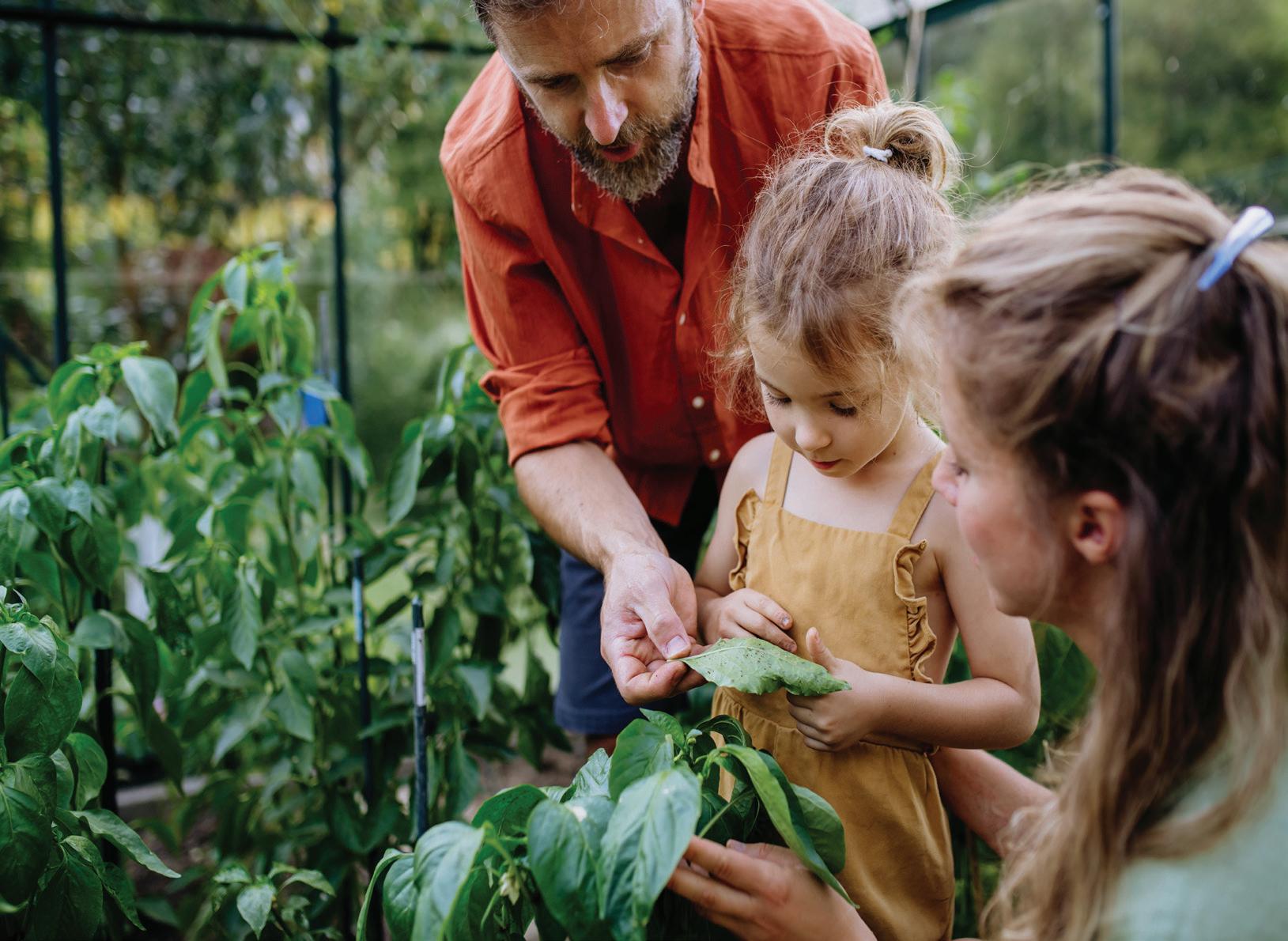
“Everyone has a critical role to play, especially those with the purchasing power to drive significant change”

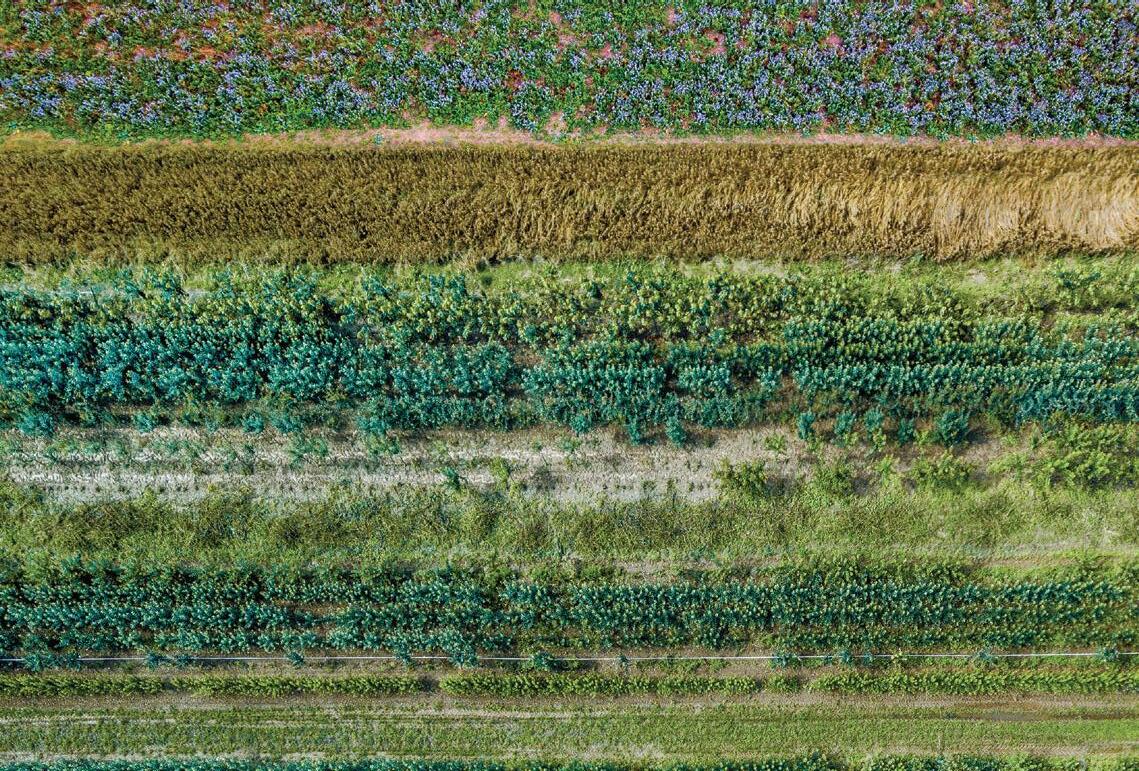

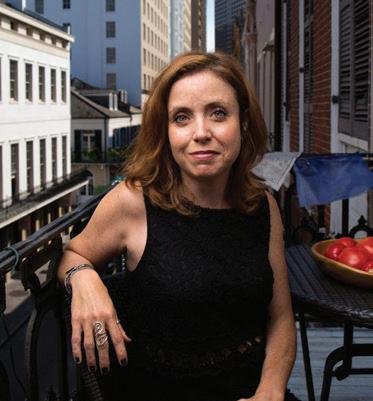

Danielle Nierenberg is a world-renowned researcher, speaker, and advocate on all issues relating to our food system and agriculture. In 2013, Danielle Nierenberg cofounded Food Tank (foodtank.com) with Bernard Pollack, a 501(c)(3) nonprofit organization focused on building a global community for safe, healthy, nourished eaters. Food Tank is a global convener, thought leadership organization, and unbiased creator of original research impacting the food system.Danielle has an M.S. in Agriculture, Food, and Environment from the Tufts University Friedman School of Nutrition Science and Policy and spent two years volunteering for the Peace Corps in the Dominican Republic. Danielle is the recipient of the 2020 Julia Child Award.
Emily Payne has served as editor of the global sustainable food nonprofit Food Tank since 2015. Her writing covers the intersection of food, agriculture, climate, and health and has appeared in GreenBiz, Edible Magazines, The Counter, Mad Agriculture Journal, AgFunder News, FoodUnfolded, Thomson Reuters Foundation, Inter Press Service, the New York City Food Policy Center, and more. She is based in Denver, Colorado.
BY SARA ROVERSI


According to Copernicus’ analysis, March 2024 was the tenth consecutive warmest month ever recorded. The future outlook is even more alarming: the World Meteorological Organization (WMO) warns that there is a 98% chance that one of the next five years will be the warmest on record and estimates a 66% probability that temperatures could temporarily exceed the +1.5°C threshold above pre-industrial levels.
This scenario is significantly worsened by activities related to agriculture, forestry, and other land uses (AFOLU), which account for 22% of global greenhouse gas emissions, along with the energy, industry, transport, and building sectors, which contribute 79%. All these sectors are interconnected within the global food system— from production to transport, from processing to consumption. Yet, a tragic paradox emerges. As highlighted by the UN, the global population is expected to reach 8.5 billion by 2030, further increasing to 9.7 billion by 2050 and 10.4 billion by 2100. This progressive demographic growth will lead to a mounting pressure on our planet’s already limited resources—a situation that, as attested by the FAO, will require increasingly careful and sustainable management.
It is clear that the foundation on which the global food system has relied so far has proven inadequate. Adopting a new approach is now more imperative than ever, and this essential change requires innovation. But what kind of innovation? Does innovation necessarily translate into artificial food production? Possibly. Or does it mean incorporating insects or novel foods into our diet? It could be. However, perhaps not, because there likely is another solution right under our feet. If we truly aim to create a paradigm shift, we must start from the roots. If our real goal is to act concretely and produce tangible results for the well-being of our planet, we must not only ask what we eat but also where it comes from. Not just what we will eat but how we will produce it. This continues to make a difference because the food we bring to our tables is the result of a process that starts from a root, and it is from the roots that we must return to begin anew.


Food is never just food; it encompasses everything that precedes it: the soil where it was grown, the hands that cultivated and harvested it; the water that irrigated it, the air surrounding it, and the processes and methods that brought it into our kitchens. Knowing the origin of our food means understanding its impact on our health; it means understanding what kind of production methods I support and whether I am benefiting or harming my planet. It means embracing the values that each food carries with it and becoming its indirect ambassador and guardian.
We must demand to recognize the origin of our food not only through a label but through its flavors. This (it is becoming increasingly
clear) is only possible when the foods result from sustainable production methods, such as those of regenerative agriculture, which respect the rhythm of the seasons, the cycle of nature, and human timings. A system that not only contributes to reducing greenhouse gas emissions by up to 50%—thanks to minimal soil tillage, permanent cover, and crop diversification—but also offers foods of superior quality. Foods that delight the palate, properly nourish our body, and support the community inherently linked to them. Returning to the roots in how we produce, and mentally, reflecting on how that food is produced, represents an act of excellent food awareness and a recovery of our historical and cultural heritage. It is a matter of safety, quality, and transparency, but it is also an exploration of the traditions at our lifestyle’s foundation.
Clearly, our focus should not be on implementing short-term strategies, but rather on promoting and adopting lifestyles or management models based on food with regenerative potential for the individual and for the planet—starting from each purchase, from each question of “where does this product come from”. Each of us has the power to make a difference, and it starts with the choices we make every day.We need to go back to the roots to move forward. This does not mean going back to the past, but going back to take a run-up, adapting yesterday’s values to today’s and tomorrow’s needs.
It is essential that every entity, particularly large organizations, re-establish a direct connection with those who produce our food. Only through this connection can we
truly value and convey to the consumer the essence of what we consume, promoting and spreading agricultural practices that respect and maintain the natural balance. It is imperative to create the conditions for a vital and sustainable ecosystem essential for the survival of the life chain, which includes our food resources and the health of our environment. The soil represents an element and the crucial foundation from which all forms of regeneration and prosperity emerge. Roots, deeply anchored in the earth, not only support trees but also offer the possibility of generating fruits that, transplanted elsewhere, can give life to new shrubs and forests. This is the true spirit of food production envisioned for the future, which questions how much food has been produced and how and where it comes from, thus perpetuating a virtuous cycle of growth and regeneration.



Sara Roversi is an experienced entrepreneur and thought leader in the food ecosystem. As a seasoned growth expert, she works with globally recognized high-profile think tanks on setting the agenda for the sustainable food industry. With her Future Food, founded in 2014, she is the Focal Point of the UNESCO Emblematic Community for Mediterranean Diet, Pollica (Cilento). She is the co-founder of goodaftercovid19.org, Ambassador of the Agrifood Tech & Wellbeing (Federated Innovation project @MIND), President of the Scientific Committee of Fondazione Italia Digitale, member of the Google Food Lab, and partner of the Food For Climate League.
BY FABIO PARASECOLI
Darjeeling tea from India, Taleggio cheese from Italy, and Baena extra virgin olive oil from Spain: over the past few decades, consumers in the Global North have shown growing interest in artisanal ingredients, traditional culinary customs, and heritage foods from all over the world.

The more obscure and less known, the better, it would seem. Knowledgeable consumers often express a desire for culinary specialties that ensure great taste, quality, but also opportunities for discovery and exploration. Ingredients, dishes, and practices that have maintained connections to places, the people that live in them, and the traditions they have developed over generations do not risk any longer to be forgotten in a global food system that is increasingly standardized. Instead, they have become objects of curiosity and, at times, passion.
Enter geographical indications and other products that can be clearly and reliably connected to their soil, their climate, their precise locations, the communities that inhabit them and the production method that they have developed to respond to their needs in that specific context.
In fact, the market value of products with specific and identifiable provenance has been increasing. This may come across as a paradox at a time when mass production and industrial technologies dominate our contemporary food systems, at least from a quantitative point of view. This transformation is a crucial historical development that should not be discounted, because it has allowed for increased food availability around the world, making hunger and famines less prevalent, although
unfortunately still occurring. However, issues of sustainability, labor justice, and nutrition have come to the fore with mass production; moreover, new research is pointing to the health dangers of hyper-processed foods. Due to these concerns, growing numbers of consumers are turning to purchases that provide more than just affordability and convenience.
Not only advertisers and marketers but also distributors, retailers, and restaurateurs are well aware of these dynamics and the shifting preferences of their customers. Crops, specialties, and dishes whose growth or manufacture was usually limited to small areas and were available only near the production location, can be appreciated anywhere, if their supply chains reach far enough.
Products coming from the most far-flung corners of the planet are now widely available in dining establishments and shops and have become increasingly visible in media, thanks to social networks and the active role consumers have played in their expansion. New segments of consumers with relatively high spending power are learning to appreciate the manual skills and knowhow of artisanal food producers and their historical ties with local cultures, and they are ready to pay more for products that embody those traits.
Pleasure comes from the flavors and textures of ingredients and dishes; however, the stories connected with them are also important. The value of products is often determined not only by their inherent material and sensory characteristics, including their objective and memorable qualities - but also by the promise of something else: joy, indulgence, and feeling part of something larger. For affluent consumers in postindustrial societies, preoccupations with availability and access to food are being replaced by a longing for the consumption of experiences rather than just material substances. Shopping and eating become arenas for what Joseph Pine and James Gilmore defined in the late 1990s as the “experience economy,” pointing to how production, business, and services have shifted toward providing forms of personal engagement -intellectual, emotional, and sensory-- and the memories that follow them. The value of such experiences increases proportionally with their uniqueness and intensity.
Marketing research, as well as scholarly investigations, suggest that consumption contributes to customers’ construction of their sense of self and their cultural and social identity. As purchasing choices play an increasingly important role in defining who we are as individuals and as members of communities, food has moved to the center of political issues, social dynamics, and cultural preoccupations. Far from being
perceived as embarrassing leftovers from a backward past, rural and artisanal traditions are appreciated as anchors against the globalized and seemingly unstoppable flows of goods, people, finance, and ideas. They can also become sources of inspiration and emotional sanctuary: the sense of cultural loss and a lack of direct relationship with the origins of what we eat often lead consumers to look for forms of tradition and authenticity.
This yearning is also behind the growth of culinary tourism, in which food becomes a fundamental component—if not the main motivation—for traveling. Visitors not only want to get decent meals; they want to enjoy the distinctiveness of the new location through its culinary products and gastronomic traditions. This interest in exploring different realities through food reflects the desire for a cosmopolitan lifestyle that allows individuals to consider their openness to encounters with the unfamiliar as a mark of their sophistication and cultural capital.
Probably for these reasons, similar dynamics are also emerging in developing countries of the Global South, where burgeoning middle classes are embracing food connoisseurship and access to specialty products as a relevant element of their cultural identity. Of course, these dynamics change from country to country, and at times from region to region, responding to the specific cultural contexts and historical developments that make the meanings and practices attached to traditional and local foods so varied and complex. Such localized dynamics are now the object of a growing body of study and research.
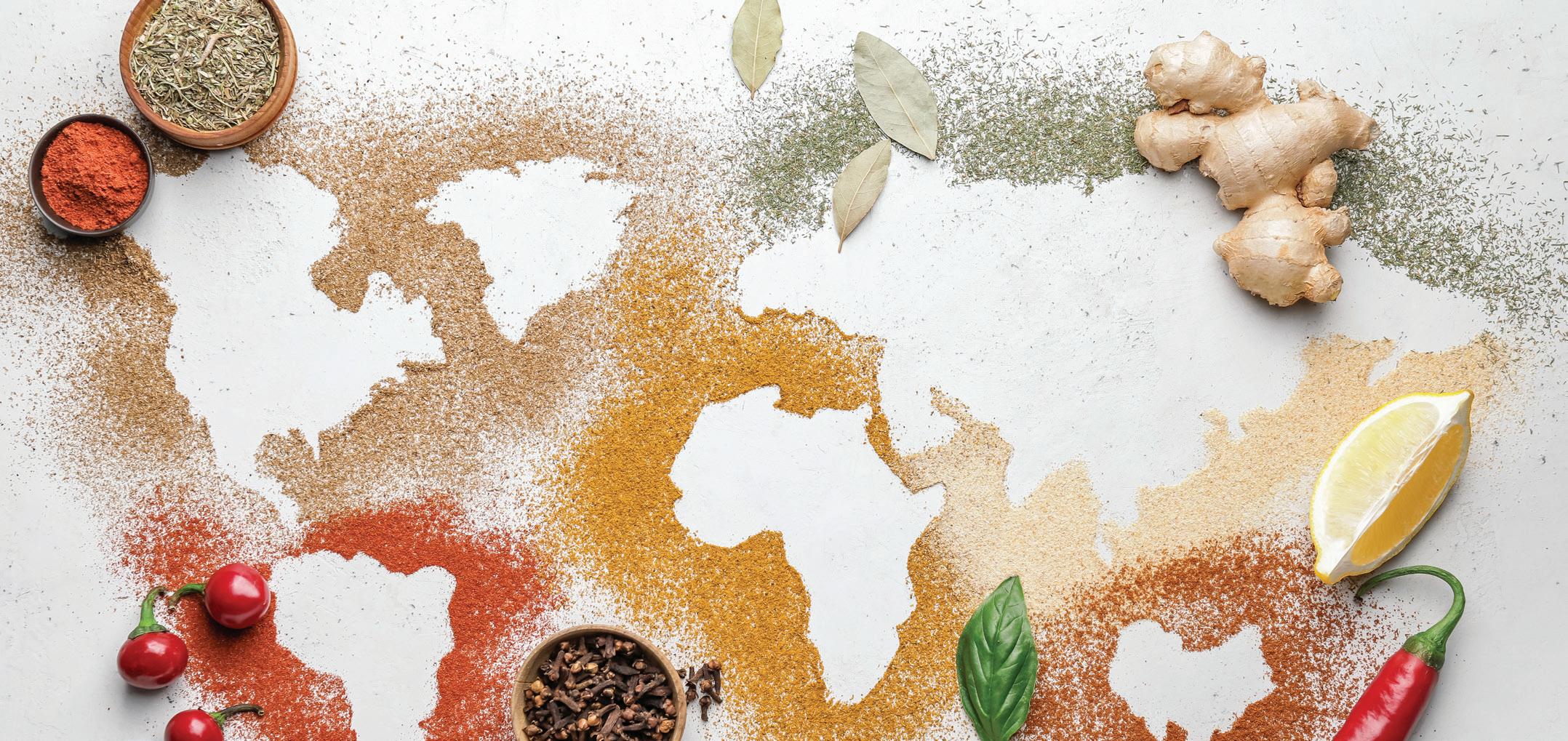
Ingredients, dishes, and practices that have maintained connections to places, the people that live in them, and the traditions they have developed over generations no longer risk being forgotten in a global food system that is increasingly standardized.
Of course, the interest in artisanal and traditional foods brings its own causes for anxiety, traceability and safety being the first ones. From this point of view, geographical indications are in general well-positioned. Concerns in terms of treatment of farmers and other laborers involved, especially in less developed countries, have acquired great relevance.
Last but not least, we need to take into consideration the environmental consequences of the growing demand for certain crops or animal breeds, as well as the impact of climate change on their agronomic and economic viability. That said, opportunities to leverage artisanal and traditional foods exist in terms of socio-economic development: it is up to the communities involved to figure out the best and fairest ways to take advantage of them.
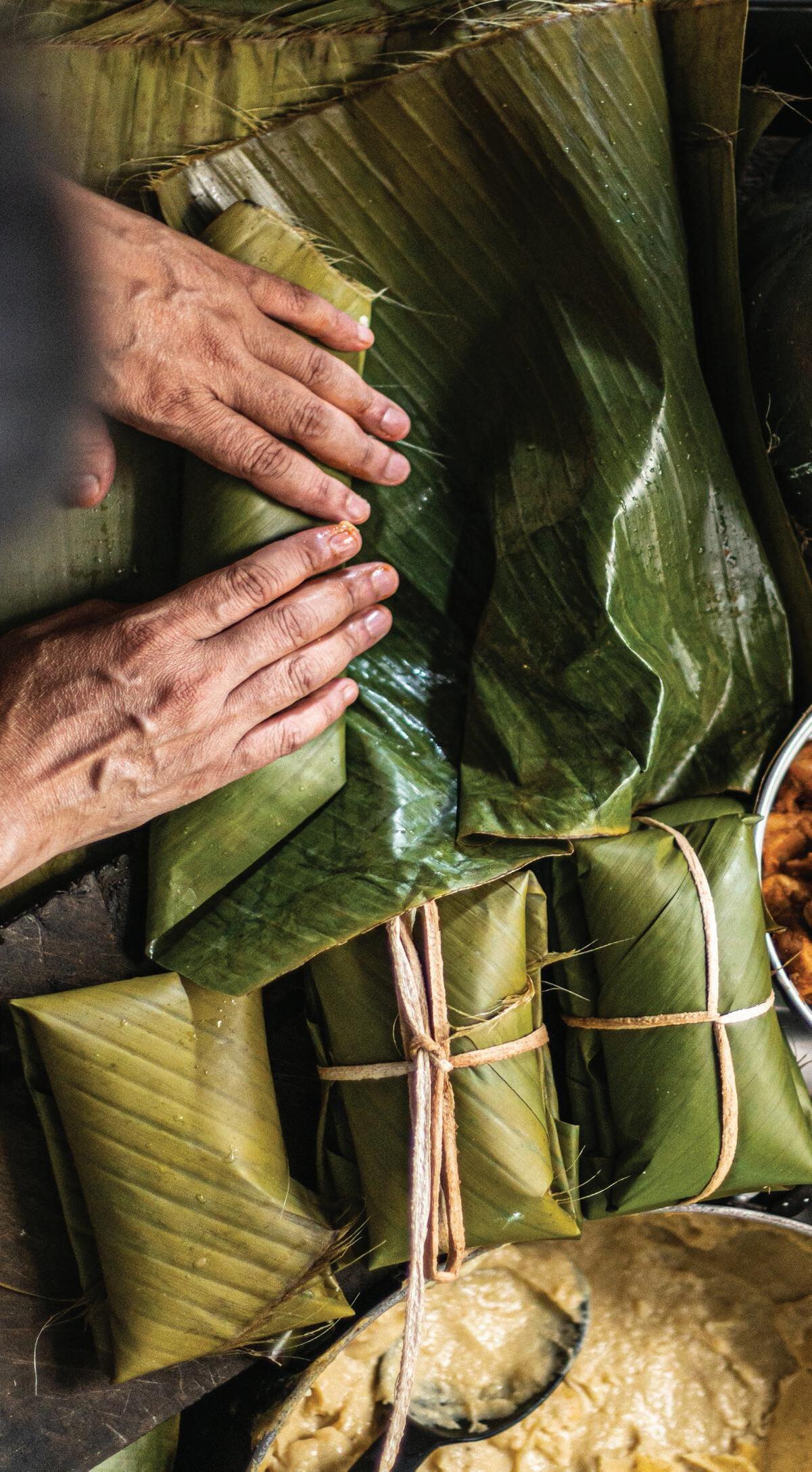

Fabio Parasecoli is Professor of Food Studies in the Nutrition and Food Studies Department at New York University. His research explores the cultural politics of food, particularly in media, design, and heritage. Recent books include Knowing Where It Comes From: Labeling Traditional Foods to Compete in a Global Market (2017), Food (2019), Global Brooklyn: Designing Food Experiences in World Cities (2021, coedited with Mateusz Halawa), Gastronativism: Food, Identity, Politics (2022), and Practicing Food Studies (2024, coedited with Amy Bentley and Krishnendu Ray).


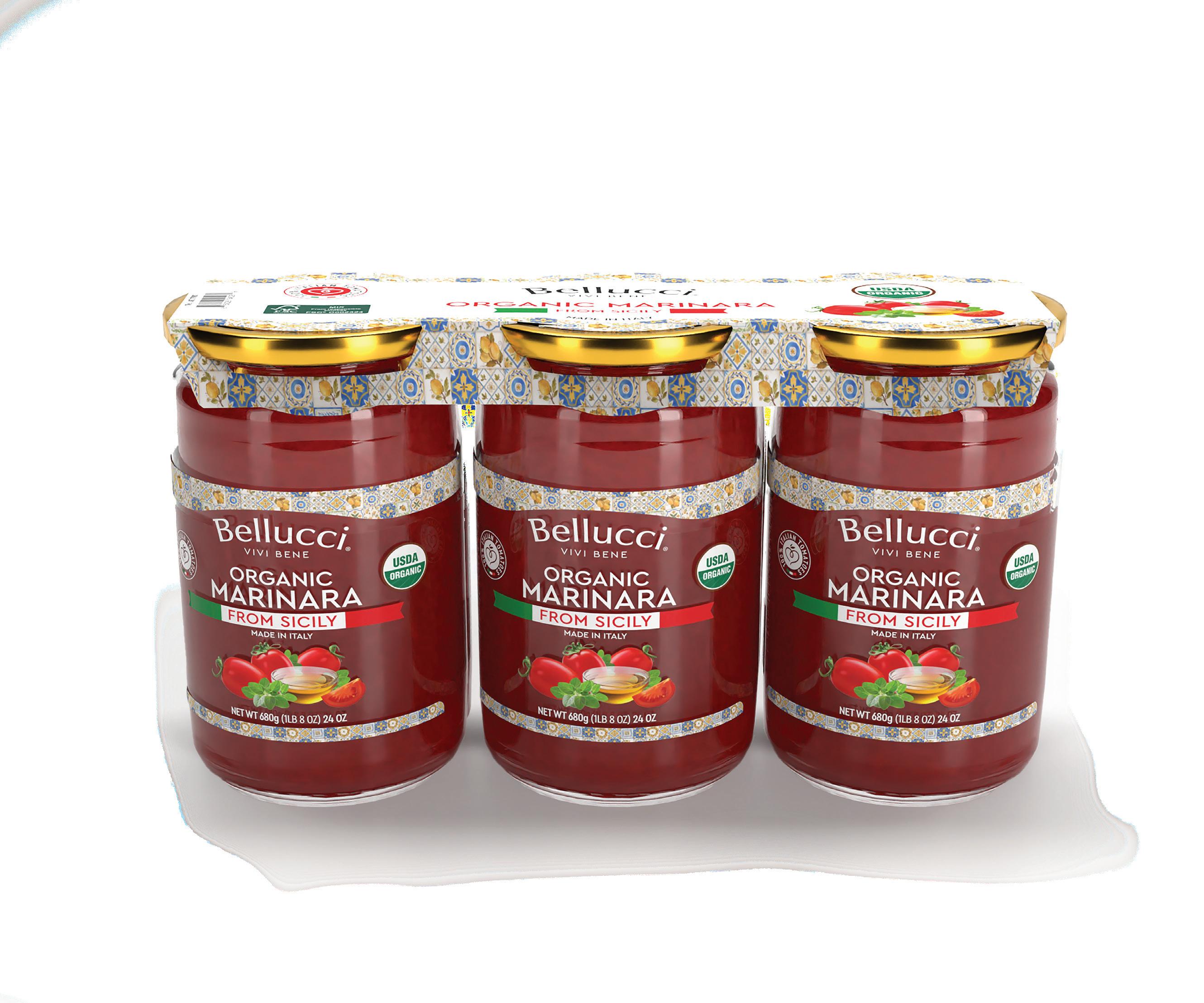

BY PIER PAOLO GHELFI
In our fast-paced, globalized world, many of us have lost sight of where our food comes from, leaving us disconnected from the cultures, landscapes, and practices that make up the food we eat every day.
Thankfully, a growing movement is calling for us to rediscover the origin of our food and celebrate it. As prosciutto makers, we wanted to seize this opportunity to help you understand the craft of prosciutto making and celebrate its connection to Italian culture.
At the heart of this conversation comes the concept of “terroir”. Terroir is a French term that describes the combination of soil, climate and topography that gives a food product its unique character. But terroir goes beyond the physical. It’s about the human element, about traditional practices and culture that have been passed down through generations.
If we look at Italian gastronomy, for example, prosciutto stands as an emblem of tradition and taste. This air-dried, cured ham, appreciated for its delicate flavor and tender texture, offers more than a culinary delight—it serves as a prime example when looking into the importance of origin and production methods in our global food story.
Originating from Italy, the craft of making prosciutto is an art form that has been perfected over centuries, a tradition to which we have devoted our entire lives.

Prosciutto di Parma, for instance, is produced from carefully selected breeds of pigs, fed a diet that includes the whey from Parmigiano-Reggiano cheese production. The hams are then salted and air-dried in a process that can take up to two years, a method that highlights the significance of time and tradition in crafting foods that are deeply rooted in a specific cultural and geographical landscape. The result is a product that not only is delicious, but also conveys the spirit of the region.
The special weather in the Italian regions where prosciutto is made, such as Parma and San Daniele, have a significant impact on the flavor of the ham. The air, humidity, and even the traditional practices of the area all play pivotal roles in shaping the final product.
The exploration of food origins reveals diverse culinary traditions of sustainable practices, ethical husbandry, and respect for the natural world. The best producers adhere to stringent regulations that ensure their products not only meet high standards for animal welfare, feed quality, and environmental stewardship,
but also respect ecological balance and animal well-being. This commitment to sustainability and ethical practices highlights the profound impact our food choices have on our planet. By choosing foods rooted in responsible production methods, consumers wield the power to drive change and encourage producers to adopt practices that nurture the environment and culinary tradition.
Moreover, understanding the provenance of our food offers invaluable insights into its nutritional value and health implications. Locally produced, responsibly sourced foods are more likely to retain their nutritional integrity and be free from harmful additives, ensuring freshness and reducing the need for preservatives. Transparency empowers consumers to make informed decisions regarding GMOs, pesticide use, and antibiotic resistance, promoting a healthier lifestyle and a more sustainable food system.
As we navigate the modern food landscape, the conversation about food provenance emerges, guiding us towards a more conscientious approach to living.

“By connecting with the origins of our food, we embrace a celebration of tradition, terroir, and sustainability – one that honors the land, the producer, and the culinary heritage that nourishes our world.”
This journey invites us to question the narratives behind our food, to support local and sustainable producers, and to advocate for policies that promote transparency and environmental stewardship. In doing so, we not only contribute to a more equitable and resilient food system but also ensure that the diverse flavors and stories that have delighted generations past will continue to nourish generations to come.
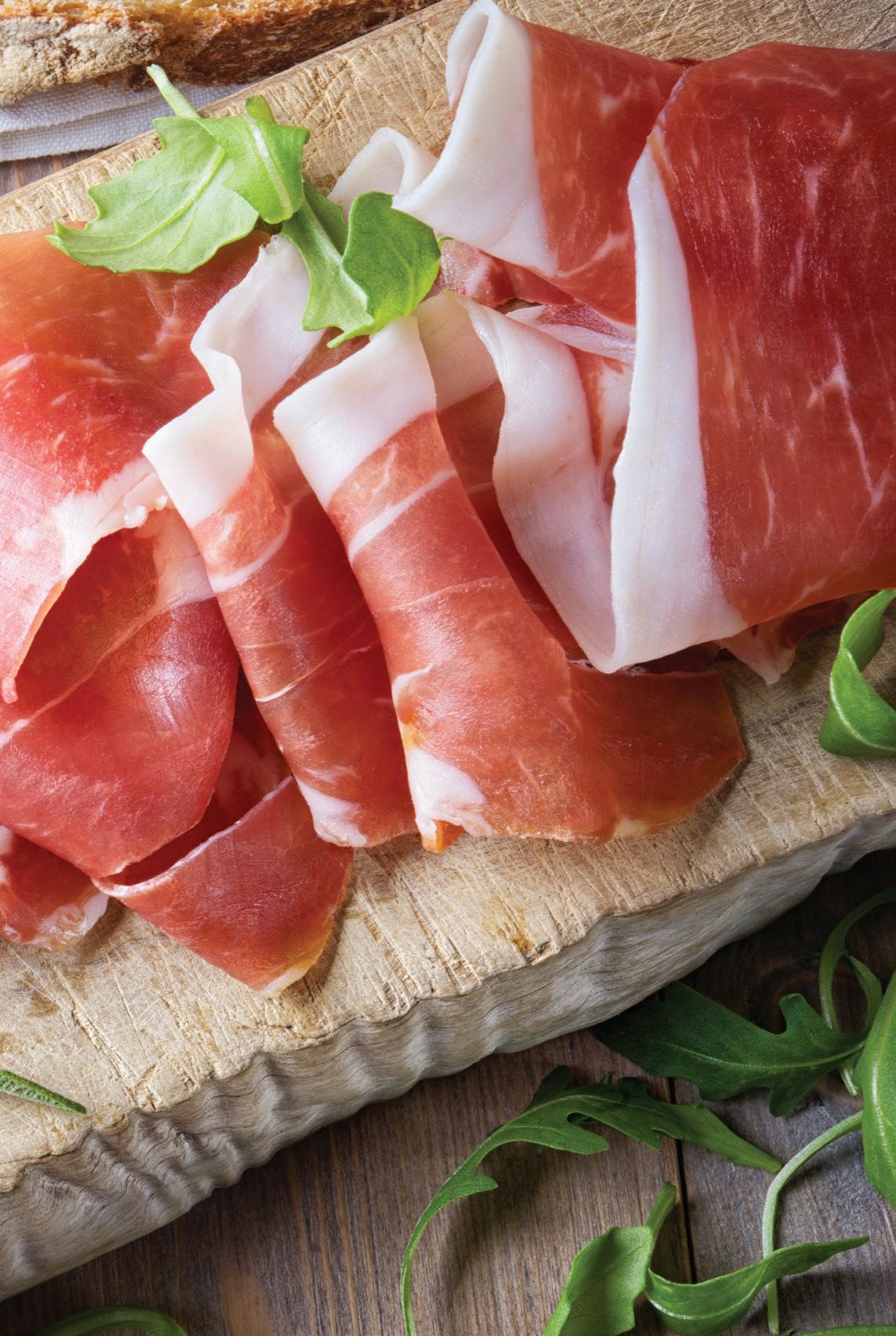

Pier Paolo Ghelfi, a dedicated Export Manager at Ferrarini, has been with the company since 1985, celebrating his 40th anniversary next year. After initially focusing on commercial development in Italy, Pier moved to Madrid in 1992 to establish Ferrarini’s presence in the Spanish market. Today, he also oversees the company’s operations in the United States.
Pier’s unwavering goal has been to position Ferrarini as the benchmark for uncompromising quality in Italian cured meats, particularly through its flagship product, il “Prosciutto Cotto Ferrarini,” which pioneered - in Italythe production of the first cooked ham without added polyphosphates.
About Ferrarini
Ferrarini is a family-owned company celebrated for pioneering the production of cooked ham without added polyphosphates. With a deep commitment to tradition and quality, Ferrarini has become a symbol of Italian gastronomy, offering a wide range of delicacies including Prosciutto di Parma, salami, Mortadella, and Parmigiano Reggiano PDO. In addition to its presence in Italy, Ferrarini has expanded internationally with a subsidiary in the USA. To ensure the authenticity of its sliced salumi imported directly from Italy, Ferrarini employs blockchain technology to certify the origin of its products. Embracing sustainability and innovation, Ferrarini continues to share the richness of Italian food culture with the world, rooted in family heritage and a passion for excellence.
BY JUAN VICENTE OLMOS
The history of the iberico pig and the “Montanera”
The “montanera” is the period in which the Iberian pig is fattened on acorns, grass, and natural resources of the pasture to reach its final weight before slaughter. During this timeat least 60 days - the animal must gain at least 46 kg and reach a final weight of over 138 kg.
It may be another of the many fortunate coincidences that come together to produce the wonderful Iberian acorn-fed ham, but the truth is that the weather aligns with the maturation of the acorns, which coincides with the propitious moment for the pig’s traditional slaughter. In the winter, until a few years ago before the invention of artificial refrigeration, the only viable way to safeguard the pig’s meat was to slaughter it at the beginning of winter to take advantage of the season’s cold to conserve the meat and its products.
The result is a finished animal, as they say: well fed and with all its fattening potential culminated. Its meat and bacon have also captured all the flavor of the pasture, the antioxidants of the grass, the oleic acid of the acorn, and so many other aromatic compounds that have integrated into its bouquet.
Today this fattening system practically exists only in the Iberian Peninsula. Still, it has historically been the most common and
rational way of exploiting the pig’s adipogenic capacity and the natural resources to which this animal is naturally adapted. Throughout Europe, there are references to this system of grazing, in which the main fruits of the autumn trees - acorns, chestnuts, and beechnuts, for example - are used.
Deforestation in Europe has intensified in recent centuries for different reasons in each epoch: from mining and fuel needed for the extraction of metals, in Roman times and earlier; to the construction of ships for the great Spanish Armada and to everyday activities such as the construction of houses or fire for heating and cooking. In the 18th century, with the agricultural and industrial revolution, deforestation intensified as the production of grain and other crops multiplied. All these factors forced the pig farmer to take pigs out of their environment and into stables, and change the pig’s natural fattening in the forest with natural resources, for feeding in stables with cultivated food.
This paradigm shift caused important modifications in local pig breeds - and most disappeared altogether. Faced with the need to make pig breeding profitable, now that food has to be provided to pigs rather than foraged for themselves, the animal’s efficiency and speed in fattening and producing large numbers of piglets has become more important.

Thus began the formation of the new European pig breeds, with a large contribution of blood of Chinese origin that provided the crossbreeds with greater prolificacy and precocity in their maturation and consequent fattening. These animals were also more adapted to breeding in stables and would no longer have thrived in the natural conditions of the forest.
After different historical periods, in which fat production was initially prioritized but later penalized, breeds continued to evolve into what we see today: pigs capable of reaching weights over 100 kg within a few months and with hardly any fat on their bodies.
But in the Iberian Peninsula, and specifically in its southwest, there remains a small redoubt in which we still find an ancient, rustic, and extremely fatty pig: the Iberian pig, which is fattened in the dehesa, an anthropic forest characteristic of this region, one that aspires to be declared a cultural landscape by UNESCO. Its main fruit is the acorn, which has a high energy content and low protein levels, a nutrient that the animal will compensate for in part by consuming grass and other natural resources.
The survival of this type of ecosystem in our peninsula is due to various reasons including the quality of the soil, the 13th century reconquest of these lands, and the quality of the acorns produced by these trees, which are much sweeter and more appetizing than in the rest of Europe. But ultimately, it’s the quality of the meat products obtained, especially Iberian acorn-fed ham, that has allowed these unique systems to be maintained in the Iberian Peninsula
From the Iberian pork and the elements of the dehesa ecosystem, we obtain the raw material. After minimal processing and up to years of maturation and curing, this raw material gives rise to the gastronomic marvel that is Iberian acorn-fed ham. The slices boast a bright, almost crimson red color, sometimes softened by the white streaks of infiltrated fat.
At room temperature, this fat lends a shine and fluidity in the mouth, which is further intensified by the rapid salivation produced by exciting the taste buds with just the right amount of salt and a multitude of sapid molecules. The pleasant texture is consistent but not hard, with no sensation of wetness but a fluidity that becomes livelier with each bite - keeping us salivating. The powerful aromas, with tones of slightly aged, cured fat, are pleasant and intense, softened by sweet nuances of certain amino acids, slowly released during maturation. All this is wrapped in the oiliness of the oleic acid and dozens of volatiles that together give the ham that exquisite persistence in the mouth.




Juan Vicente Olmos Llorente is a General Manager of Grupo Monte Nevado. Belonging to the 4th generation of Monte Nevado, and being veterinarian by training, he is a tireless researcher of the world of ham. He is well-acquainted with numerous ham facilities across Spain and has experience working in several in Italy, Germany, Belgium, Portugal, and the USA. Additionally, he has written three books on ham and the Iberian pig.

EXTRA VIRGIN
OLIVE OIL
The highest quality grade
CHEMICAL STANDARDS
Free Acidity (%)
Peroxide Numeber (meqO2/Kg) K232
SENSORY STANDARDS
OLIVE OIL
A blend of refined olive oil with extra virgin and/or virgin olive oils
OLIVE - POMACE OIL
A blend of refined olive-pomace oil with extra virgin and/or virgin olive oils
Virgin olive oil
The olive milling process
Extra-virgin Virgin Lampante
The physical-chemical refining process
The
Pomace
extraction
The physical-chemical refining process
N.B.: Only the boxes highlighted in green are suitable for human consumption
BY JORDI JARDI SERRES
Extra Virgin Olive Oil (EVOO) is not only an essential ingredient in cooking, but also a flagbearer of sustainability and agricultural tradition.
Let’s explore its history, advances in production and impact on society and tourism, touching on the concept of kilometre-zero products and the important role played by farmers in the industry.
Mankind’s relationship with olive oil dates back to the Phoenicians and Romans, who improved and expanded its production, considering oil an essential element of their diet, medicine, and religious rituals.
Particularly noteworthy is the continued survival of ancient olive trees in regions like Catalonia which not only produce liquid gold but also represent a living cultural heritage. These witnesses of bygone eras demonstrate the continuity and adaptation of agricultural techniques over centuries, forging a symbol of culture and prosperity, just as the culinary experience has developed from home cooking to restaurants.
The longevity of these trees, often centuries old, not only pays testament to age-old cultivation techniques but also encapsulates how this biodiversity has withstood the test of time, adapting to both climate and human changes.
The modernization of olive oil extraction has made it possible to preserve the quality and purity of the product. Methods have evolved from the simple hand presses used in ancient times to today’s complex centrifugal extraction machinery, an evolution that increases yield and ensures the integrity of the oil’s flavour and nutrients.
This technologically advanced process must be managed by highly qualified farmers and technicians, whose knowledge and experience are fundamental to the final quality of the end product. Appreciating their efforts is essential to understanding the complexities and simplicities of olive oil at its finest.

Since ancient times, olive oil has been an essential element of domestic kitchens, used in cooking, preserves, and dressings. Its nutritional value and versatility make it an indispensable element of the Mediterranean diet and in homes across the globe. Savouring a slice of fresh bread soaked in freshly pressed Oli del Raig oil at home; sweet dishes like coc ràpid with olive oil, as yogurt was still not used, or the popular Clotxa are just a few of the popular culinary options that can be relished in a limited number of places with this liquid gold.
When it comes to traditional cuisine, especially in the Mediterranean, olive oil is the base for countless recipes, from simple dressings to complex stews and roasts, and is a crucial element of the Mediterranean diet.
Regarding professional cooking and haute cuisine, extra virgin olive oil is used not only as an ingredient but as an essential component that contributes to the flavor of simple or complex dishes and creations. Chefs from around the world use it for its ability to enhance natural flavors without overpowering them, rounding out all the nuances captured by the senses that chefs try to provoke, respecting its specific organoleptic qualities as an essential ingredient in culinary creations.
Oil capsules are now a feature of supermarket shelves as a result of research performed in kitchens. A gastronomic legacy to make the lives of consumers easier. It is worth noting that the use of animal fats in cooking has been significantly reduced compared to the consumption of EVOO.
Furthermore, in hospital kitchens, olive oil is recognized for its health benefits, including its ability to assist in the reduction of cholesterol and the prevention of cardiovascular disease, making it a preferred ingredient in nutritional diets.
Olive oil has had a significant impact on society beyond health and cuisine. Oleotourism, a niche tourism attraction, offers visitors the opportunity to witness the production process from harvest to bottle, taste unique varieties, and participate in cooking courses. This aligns with the “kilometre-zero” concept, promoting local products that reduce carbon footprints, ensure freshness, and support local economies. Educational initiatives, like “Has begut OLI” in DOP Siurana, aim to preserve this legacy by teaching students about the attributes of EVOO across all educational levels.

by
Extra virgin olive oil, from its historical roots in ancient olive trees to its modern role in gastronomy, oleotourism, and sustainability, has demonstrated its role as a bridge between the past and the present.
Its production, rooted in the tireless efforts of farmers and respect for the land, offers us more than just food: it serves as a lesson in cooking culture, sustainability and connection with our land.
“We don’t think twice about how much we pay for almost a liter of wine, but we question the price of a liter of extra virgin olive oil. We are simply paying for access to this ancient heritage that we can enjoy in a wholly ethereal way once we have sampled it”.
“Without a great product, great creations are impossible. In this equation, to obtain great results, we need great producers.”



Jordi Jardi Serres is a Technical Specialist in Hospitality and Tourism, specializing in Kitchen Specialty at INS Escola Hospitality and Tourism in Cambrils. With over three decades of experience, he has served as a Teacher of cooking and gastronomy and held various leadership roles including Director and Head of Studies. His culinary career spans roles as a cook at notable establishments in Catalonia, including Restaurant Eugènia and Fonda Turú. He also co-owns Restaurant Casal de Miravet and has contributed to gastronomic innovation projects with Griffith Foods. Passionate about sustainability, he actively designs Training Cycles for the hospitality sector, focusing on environmental impact.






BY JOSEPH R. PROFACI
The best olive oil is the one that suits your palate and desires. That could be a single origin oil. But it just might be a masterful blend.
Many companies striving to distinguish their brands in what has become a very crowded extra virgin olive oil market are focusing on the concept of “single origin.” Unfortunately, promoting the idea that single origin is an important guarantee of quality is misleading and confusing to consumers in multiple ways.
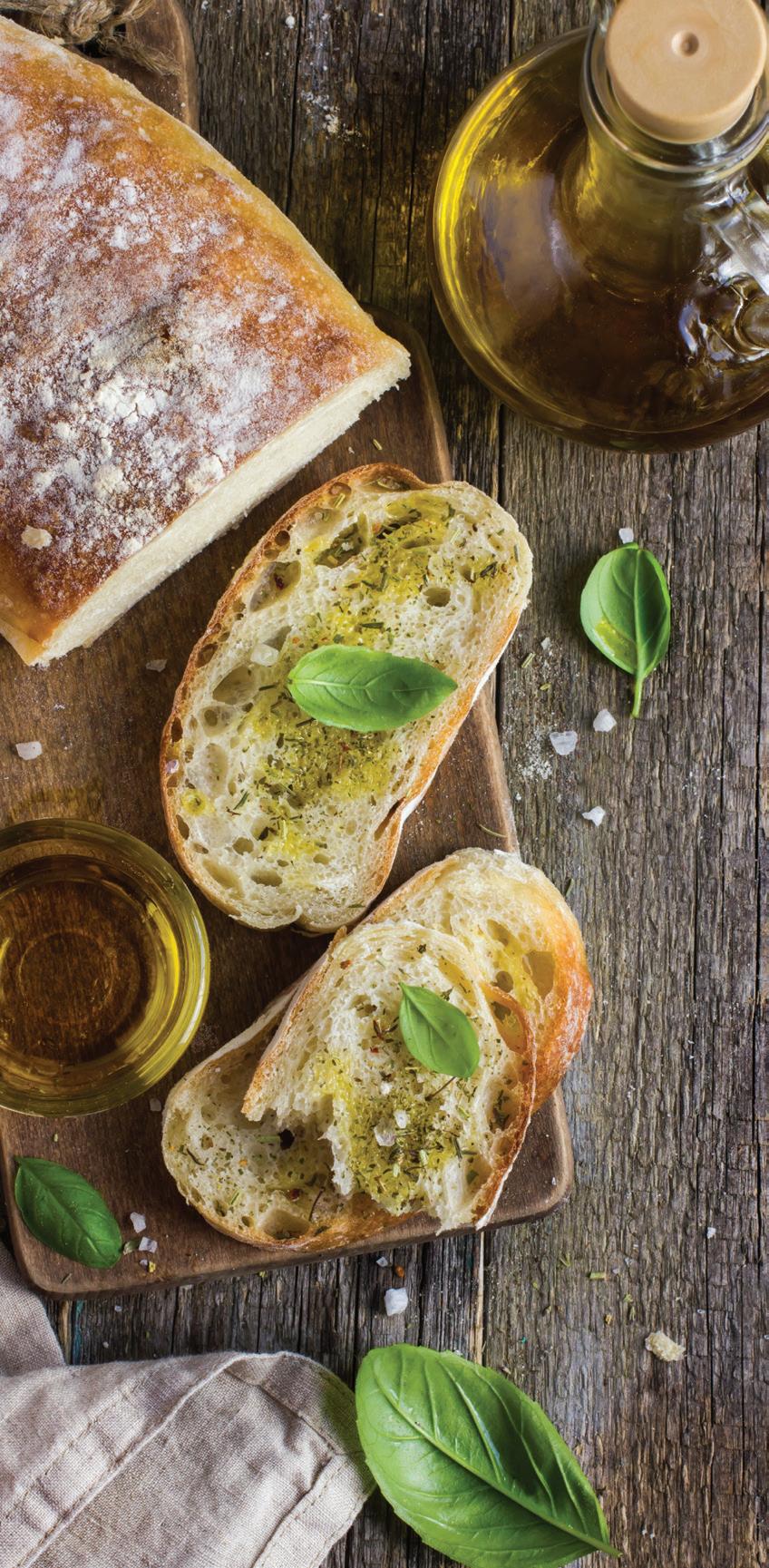
Origin can be important for several reasons, but not quality
No doubt, origin is important to many olive oil consumers. Some see it as an indication of traceability to a particular place with which they may associate quality, such as countries or regions that in their minds make the best olive oil. Others may look for oils from a specific origin because of their ancestry or fond memories from a travel experience. Or maybe they’re striving to be “authentic,” using an oil from the place that matches a particular ethnic dish they are preparing. More sophisticated consumers may also look to single origin oils to experience unique varietal characteristics, distinct production techniques, or the terroir (the special attributes imparted by geography, geology, climate).
For any consumer interested in origin, accurate and not misleading labeling is fundamental. “Single origin” however, doesn’t fit the bill. It is a marketing term that is not regulated by any authority and often can mean different things. The term loosely describes olive oil produced using olives from one specific location, but the origin could thus be as large as a country or as small as a single farm. This is in contrast to strictly regulated certifications like DOPs, which means a protected designation of origin, guaranteeing that the olives were grown in a specific location, or the less stringent IGPs, which means a protected geographical indication related to the location of the production process. (The California Olive Oil Council’s “COOC” certification and the Olive Oil Commission of California membership logo both function like a DOP for California-origin oils.)
Further, some will also wrongly use the term “single origin” to include “monocultivar,” which means that all the olives used to make the oil are from a single variety, or “estate-produced” which means that the olives are both grown and milled on a single property. Bottom line, without regulatory guidance, consumers cannot really know what “single origin” actually means in relation to specific products.

Regardless of what “single origin” is intended to mean, it is wrong to link it with quality. Single origin oils can be and often are excellent (as can also be true with monocultivars and estate-produced oils). But it is not necessarily the case. A “single origin” olive oil that is labeled 100% from a particular region from a single olive variety could be sublime. It could also be terrible. That’s because the singularity of the origin (or the variety or the estate) is not what confers quality.
For many, quality is also associated with traceability. But contrary to what those promoting the single origin concept will have you believe; traceability also doesn’t depend on there being a single origin. Thanks to modern technology, companies can provide traceability even for oils that are blended from multiple origins (“olive oil blends”), often assisted with blockchain data and QR codes.
In the end, what determines the quality of an olive oil is not information about its origin, but the skill of the farmers who cultivated and harvested the olives and the miller who extracted the oil (and yes, sometimes even the bottler who creates a blend with different oils). Arguably, the only thing that the “single origin” designation on an EVOO label can guarantee are potential variations in flavor from year to year.
Unfortunately, falsely equating “single origin” oils with quality also implies the contrary is true: that any olive oils that are not single origin, such as blended olive oils, are poor quality. This is also false. The results of skillful
“coupage,” as the blending practice is known in the industry, can include flavor consistency (blending allows for a consistent taste yearround, regardless of variations in individual crops), balanced flavor (producers can create a well-rounded product that appeals either to a broader audience or a discerning consumer), and cost-effectiveness (it’s often more economical, allowing companies to offer quality products at competitive prices). Just like single origin oils, coupages can be and often are high quality. Indeed, it is not uncommon for coupages to win esteemed competitions like the Mario Solinas. This is no different than what we know happens in the wine industry, in which vintners blend grape varieties to achieve a desired and often award-winning flavor profiles.
Consumers-as well as the trade and the media-seeking to define quality should not hitch their wagons to “single origin.”
The quality of an olive oil does not depend on whether it comes from a single origin any more than whether it comes from a particular origin, or for that matter, where it is bottled. Indeed, many multi-origin coupages are crafted to meet exacting standards of flavor, versatility, and/or affordability to meet consumers’ demands. The practice is respected in winemaking, and it should be respected with olive oil as well.
When it comes to quality, marketing terms like “single origin”--and “first cold pressed,” for that matter--are false idols that ignore and even disrespect what is truly behind great olive oils: the skill and dedication of the passionate people who make them and bring them to market.

“Without regulatory guidance, consumers cannot really know what “single origin” actually means in relation to specific products.”



Joseph R. Profaci has served as Executive Director of the North American Olive Oil Association since October 2017. He is an experienced food products attorney and business manager, with almost 30 years of experience in the olive oil category. Previously, he served as general counsel for Colavita USA, LLC, a leading importer and distributor of Italian specialty foods. He was an active representative for Colavita to the NAOOA, serving on the board for 4 years, including serving as the NAOOA chair from June 2015 - June 2017. Mr. Profaci is a graduate of Harvard College and New York University School of Law.




BY ALMUDENA PIZA BARROSO
Avocados have transcended mere culinary status to become a cultural phenomenon deeply entrenched in American food culture. From guacamole at the Super Bowl, to the proliferation of avocado toaston brunch menus across the nation, these creamy fruits have permeatedvirtually every aspect of modern dining.
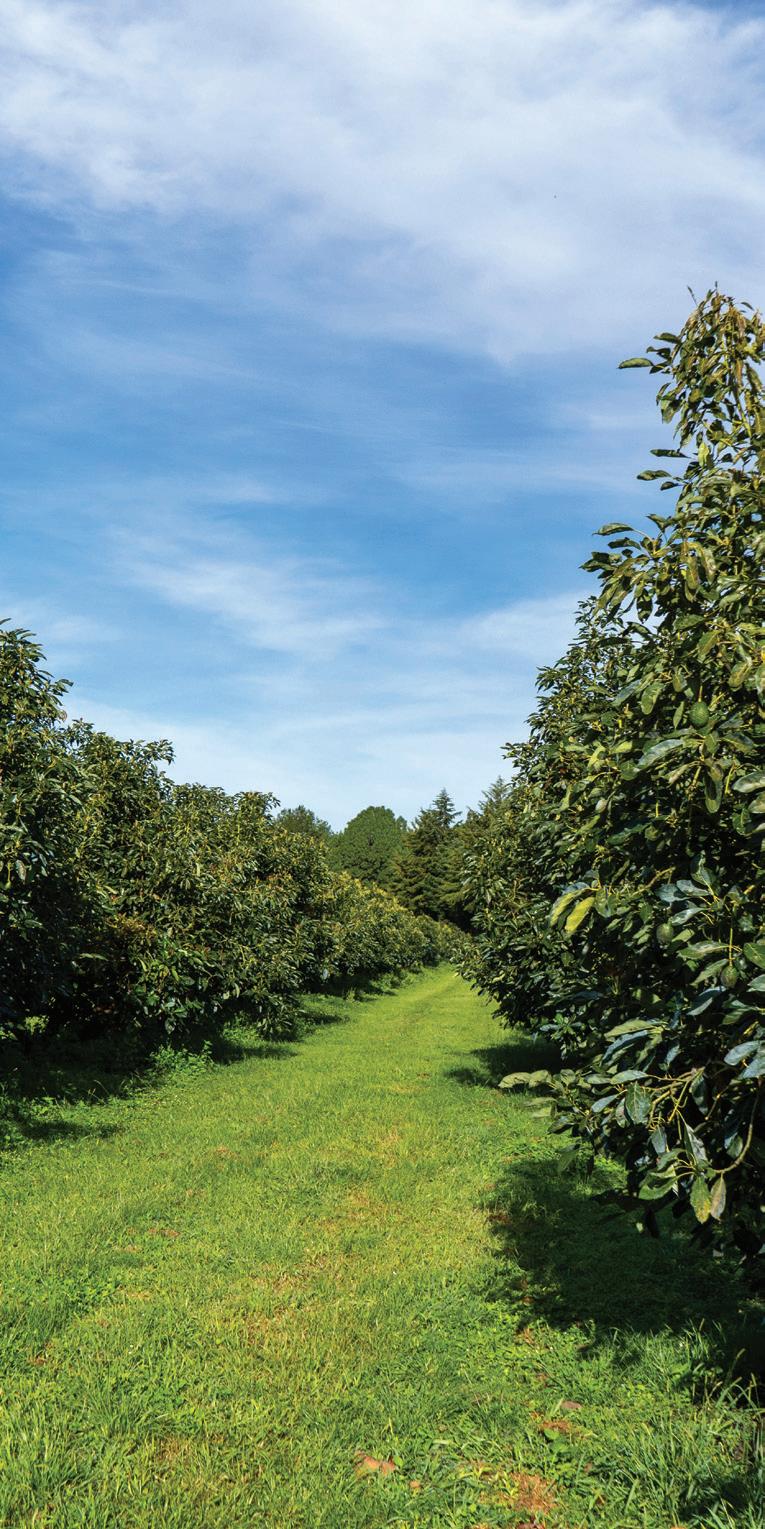
Yet, the story of avocados stretches far beyond their contemporary popularity. Avocados, now an iconic symbol of American culinary culture, trace their roots back to ancient civilizations in Mesoamerica. However, their journey to prominence took a significant turn with their introduction to California in the early 20th century, leading to a revolution in avocado cultivation and consumption. As avocados flourished in California, another region emerged as a powerhouse in avocado production: Michoacán, Mexico. This fertile land, nestled amidst the mountains, became the epicenter of avocado cultivation, supplying a significant portion of the world’s supply. From its ancient origins to its modern-day dominance, the story of avocados is a testament to the enduring appeal and global impact of this beloved fruit.
The history of avocados is deeply intertwined with the rich tapestry of ancient Mesoamerican civilizations that cultivated and revered them for their nutritional value. Mayans and Aztecs alike believed avocados symbolized fertility and abundance, and included the fruit in their diet and rituals. Early Spanish explorers were quick to recognize its culinary potential, with one 16th century description remarking: “like butter and is of marvelous flavor, so good and pleasing to the palate that it is a marvelous thing”.


“The journey of avocados, from ancient staple to modern marvel, embodies the dynamic interplay of culture, commerce, and innovation.”

While the avocados of antiquity differed from those we enjoy today, it was the ingenuity of California growers that propelled the fruit into modern prominence. In the early 20th century, avocados found their way to California, where they would undergo a transformative journey thanks to the pioneering efforts of growers like Rudolph Hass. The development of the Hass avocado variety revolutionized the industry, offering consumers a fruit with a buttery texture and resilient skin that facilitated easier transportation and extended shelf life. This innovation expanded the availability of avocados and paved the way for consumer adoption in America.
However, the path to consumption in the United States was not without its challenges. In 1915, California growers and producers created “The California Avocado Growers Exchange”, a member owned cooperative organization with the goal to grow the industry and educate consumers. The fruit formally known as “alligator pears” was largely unknown outside of California. The California Avocado Grower’s Exchange decided to lean into its cultural roots and petition for a name change to “avocado”, derived from the Aztec name “ahuacacuahatl”. In addition, early perceptions of avocados as high in fat and calories posed obstacles
to their acceptance among health-conscious consumers; but concerted efforts by industry stakeholders, aided by scientific research and savvy marketing campaigns, avocados gradually shed their negative image and emerged as a symbol of healthy eating. As that awareness spread, fueled by social media and endorsements in health publications, avocado consumption surged from 1.51 pounds to an average of 8 pounds per person by 2018 - and growing - according to the latest USDA reports.
However, despite California’s significant contribution to avocado production, demand has consistently outpaced domestic supply, leading the United States to rely heavily on imports from Mexico, the world’s largest producer. Michoacán - Mexico’s primary avocado-growing region - boasts ideal climatic conditions and sustainable farming practices that ensure year-round production. As avocado production grew in the US, importing avocados from Mexico was banned to protect their crops from possible infestation. Producers in Mexico, specifically in Michoacán, worked with the U.S. Animal Plant Health Inspection Service (APHIS) to adapt their practices to meet standards. In 1997, the ban was partially lifted, and avocados started to flow into the US. Other Mexican states followed suit, and in 2022, Jalisco was approved to to start exportation.
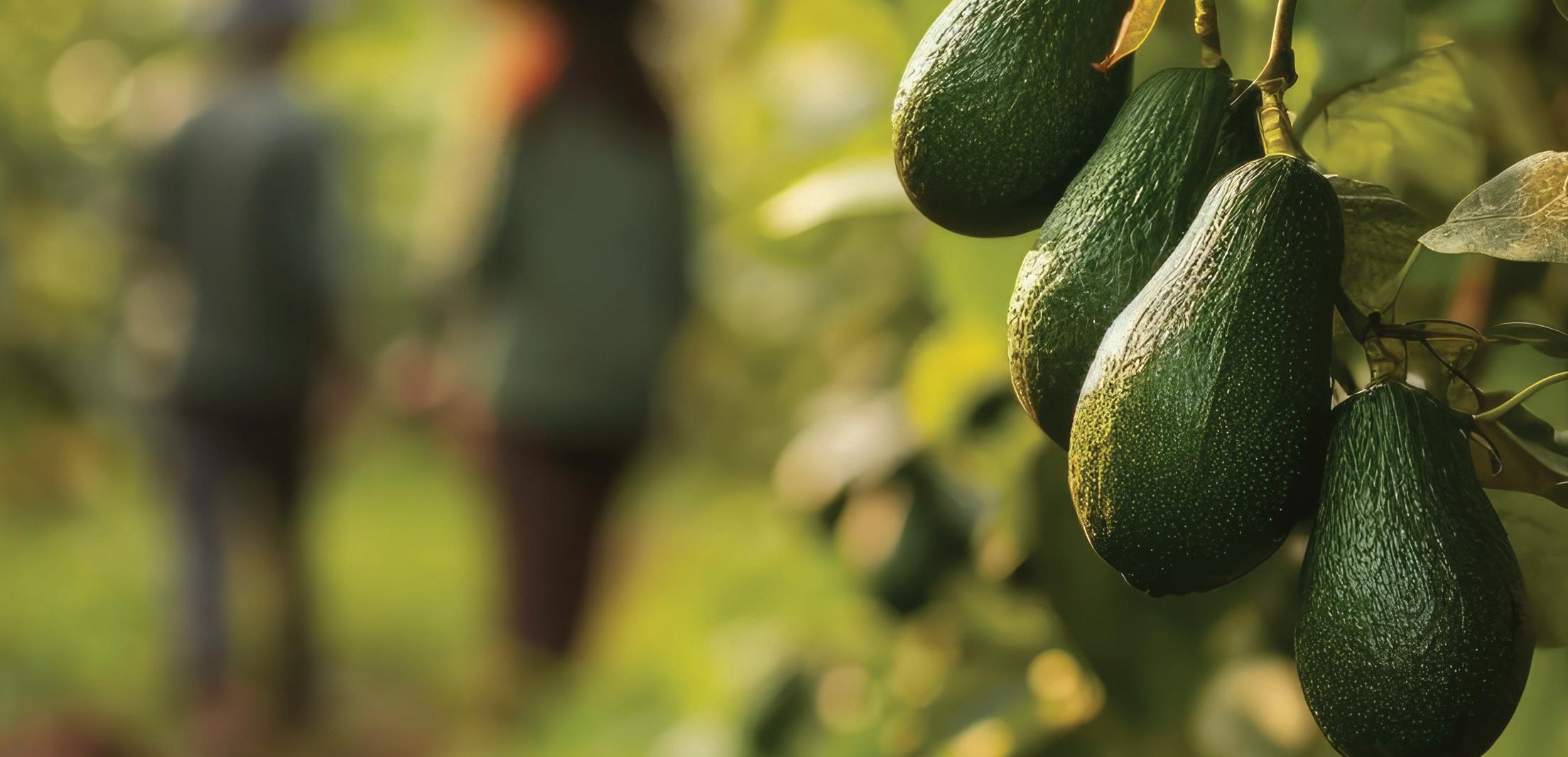

Today, Michoacán stands as the epicenter of avocado production, accounting for a significant portion of Mexico’s avocado exports and supplying markets around the world. The region’s avocado orchards stretch across vast land expanses, encompassing small family-owned farms and large-scale commercial operations. From the picturesque highlands of Uruapan, to the fertile valleys of Tancítaro, avocado trees blanket the landscape, their lush green foliage a testament to Michoacán’s status as the “Avocado Capital of the World.”
Yet, Michoacán’s success in avocado production has not come without challenges. The region has had to contend with issues such as water scarcity, soil erosion, and the threat of pests and diseases. However, through innovation, investment in technology, and sustainable farming practices, Michoacán has continued to thrive, maintaining its position as a global leader in avocado production.
As we look to the future, the avocado industry is poised for further innovation and growth. From advancements in cultivation techniques, to the introduction of new, high-yielding varieties, like the Luna UCR, that enhances freshness and increases pollination efficiency.
In essence, the journey of avocados from ancient staple to modern marvel embodies the dynamic interplay of culture, commerce, and innovation. As consumers continue to embrace this fruit, its enduring appeal serves as a testament to its remarkable versatility and enduring legacy in the world of food.


Almudena Piza Barroso is a food scholar and writer who specializes in the history and development of the avocado industry in Mexico and the United States. She holds a Master’s degree in Food Studies from NYU Steinhardt, a Bachelor’s degree in Applied Food Studies, and an Associate’s Degree in Culinary Arts from The Culinary Institute of America. She currently resides in Mexico working on agricultural trade research

BY KAMI KENNA
Tequila is a formidable global spirits category.

In 2021, Mexico produced 527 million liters of tequila worth eight billion dollars (Szczech, 13). In 2022, tequila surpassed American whiskey in sales in the United States (Carruthers 2024). All spirits are agricultural products intrinsically tied to the land and the people who look after it. Maybe tequila has landed on your radar recently, but agave-based beverages go way back in Mexico’s history. In fact, Tequila’s beginnings date back to 400 hundred years but are rooted in traditions from 10,000 years ago.
Similar to Champagne or Pisco, Tequila has its roots in a specific geographic location. Meaning “place of work” or “place of tribute” in the native Nahuatl language, Tequila is the name of the dormant volcano where indigenous people collected obsidian stone to carve into tools and weapons. In due course, the surrounding valley, the town at its base, and the beverage also took the name (Szczech, 18).
Today, tequila is the most well-known regional mezcal. Spirits made from cooked agave are mezcals, from “metl” and “ixcalli”, mezcal means “oven-baked agave” in Nahuatl. The author of A Field Guide to Tequila, Clayton Szczech, affirms that “[m]ost Mexican agave spirits are known as mezcales, and tequila was born as a regional mezcal called vino mezcal de Tequila” (18). Over time the name was shortened to just Tequila. In 1974, the Mexican government established the Denominación de Origen Tequila (DOT) declaring it distinctly Mexican to ward off imitators. Tequila became Mexico’s first Geographical Indication and the first established outside of Europe. Since 1994, its norms have been enforced by the Consejo Regulador de Tequila (CRT), a nongovernmental organization funded by the tequila industry. From plants in the ground to chemical makeup to bottling, tequila is the most regulated spirit in the world.
When Carl Linnaeus created the taxonomic system in 1753, he gave it the name “agave” from Greek meaning “noble” or “admirable” (Szczech, 22). Proper to the Americas, agaves are spiky succulents with more than 200 species or variants. Hearty and requiring little water to survive, agaves developed in the sundrenched regions largely devoid of water of Mesoamerica and Aridoamerica. Over millions of years, agaves developed the mechanisms necessary to thrive in arid environments such as foreboding thorns at the tip of each leaf, a thick waxy skin, and CAM metabolism, a process where they only open their stomata at night to prevent dehydration (Szczech, 27). Depending on the species, maturation times span from 5 years to 30 years or more. The agave is “mature” when inflorescence commences, which simultaneously signals its demise. The flower stalk, known as the “quiote”, rises upward, acting as a guide for its primary nighttime pollinators, bats. Seeds that develop from this sexual reproduction process carry forth diverse genetic codes.
However, some species reproduce asexually by rhizome and by bulbils as well. To make tequila, the agave’s reproduction cycle must be halted. The energy generated in the plant’s core in preparation for reproduction must either be harnessed for tequila or sexual reproduction, but not both.
Pre-Columbian uses of the agave included food and beverage, fuel, construction, fibers, and more. Szczech states, “[t]he agave’s importance to the development of Mesoamerican civilization is arguably without equal in the plant world” (22). Throughout Mesoamerica, pit ovens baked agave cores, converting inedible material into a nutrient and calorie-dense, toothsome comestible. The process of hydrolysis during cooking cleaves complex carbohydrate chains into simpler ones suitable for consumption, transforming dense matter into sweet pulp. Some of the more fibrous pieces were pounded into cakes for preservation and portability and later rehydrated in water for drinking. In “Alcohol in Ancient Mexico”, Henry J. Bruman explains, “[a]nother widespread method was to soak the dry cakes in water until softened and to drink the sweet, turbid liquor that remained after the fibers were removed” (18). Left alone, the sweetened water would ferment naturally into an alcoholic wine. Bruman asserts, “... wherever a mescal distilling industry arose in the colonial period, an undistilled mescal drink was known in pre-Columbian times, which in turn was predicated on the roasting of a plentiful resource of mescal plants for food” (20).. Before the arrival of Columbus, a traditional method of food preparation transitioned into the creation of a naturally fermented “agave beer,” which serves as the foundation for tequila production.
Looking into the origins of tequila draws us into the significance of the land, the people behind its production, and the distinctly Mexican traditions it embodies. Tequila exemplifies a legacy of cultural heritage, though faces mounting threats as globalization and industrialization exert their will.
Agaves:
Despite there being more than 200 species of agave, only one subvariety is permitted to make tequila, the Agave tequilana Weber blue variety, or simply blue agave. It was selected during the last century for its relatively quick maturation time, five to seven years, its adaptability and resilience, and for its potential to give high amounts of fermentable sugars.
Harvest:
It takes great skill to harvest the serrated plants, a specialist, called a jimador, expertly removes the leaves at the required length speedily. Only the heart of the agave will go to the distillery for processing.
Cooking:
By definition the plant must be oven-baked, nowadays the ovens are above ground and steam injected instead of pit-roasted. Pit-roasting requires coal to heat and is what gives traditional mezcal the subtle smokiness that tequila now lacks.
Extraction:
The sweet pulp must be extracted from the agave’s fibrous scaffolding. Producers now have several technologies at their disposal.
Traditionally, milling was done by hand. The most common mills in the industry are the tahona, a massively heavy stone wheel pulled by an animal or machine that squishes the pieces of cooked agave, or the trapiche (roller mill), which separates by squeezing.
Fermentation:
Fermentation is the part of the process where all of the flavors and aromas found in the final product are formed. Fibers are almost always absent from the fermentation process, though few distilleries continue to ferment with fibers or at least a portion of them. Distilleries have stainless steel tanks, wooden vats, or cement tanks for fermentation and they can be open or closed.
Distillation:
Tequila must be between 35% and 55% alcohol by volume, which typically requires at least two distillation passes since the ferment is about the strength of an ale, around five or six percent alcohol. Distillation is largely done in steaminjected stainless steel or copper alembic stills, or pot stills. When heat is applied, the alcohol vaporizes ahead of water in the mosto to be condensed and masterfully separated by the distiller.

OF TEQUILA:
There are five classes of tequila:
Blanco (“white or silver”)
Reposado (“rested” for a minimum of two months)
Añejo (“aged one year” at minimum)
Extra añejo (“extra aged” for a minimum of three years)
Joven (“young” a blanco mixed with an amount of aged tequila)
CATEGORIES OF TEQUILAS:
There are two categories of tequila:
100% agave tequila - 100% of the sugars come from the blue agave
Tequila - at least 51% of the sugars come from the blue agave, 49% of other sugars

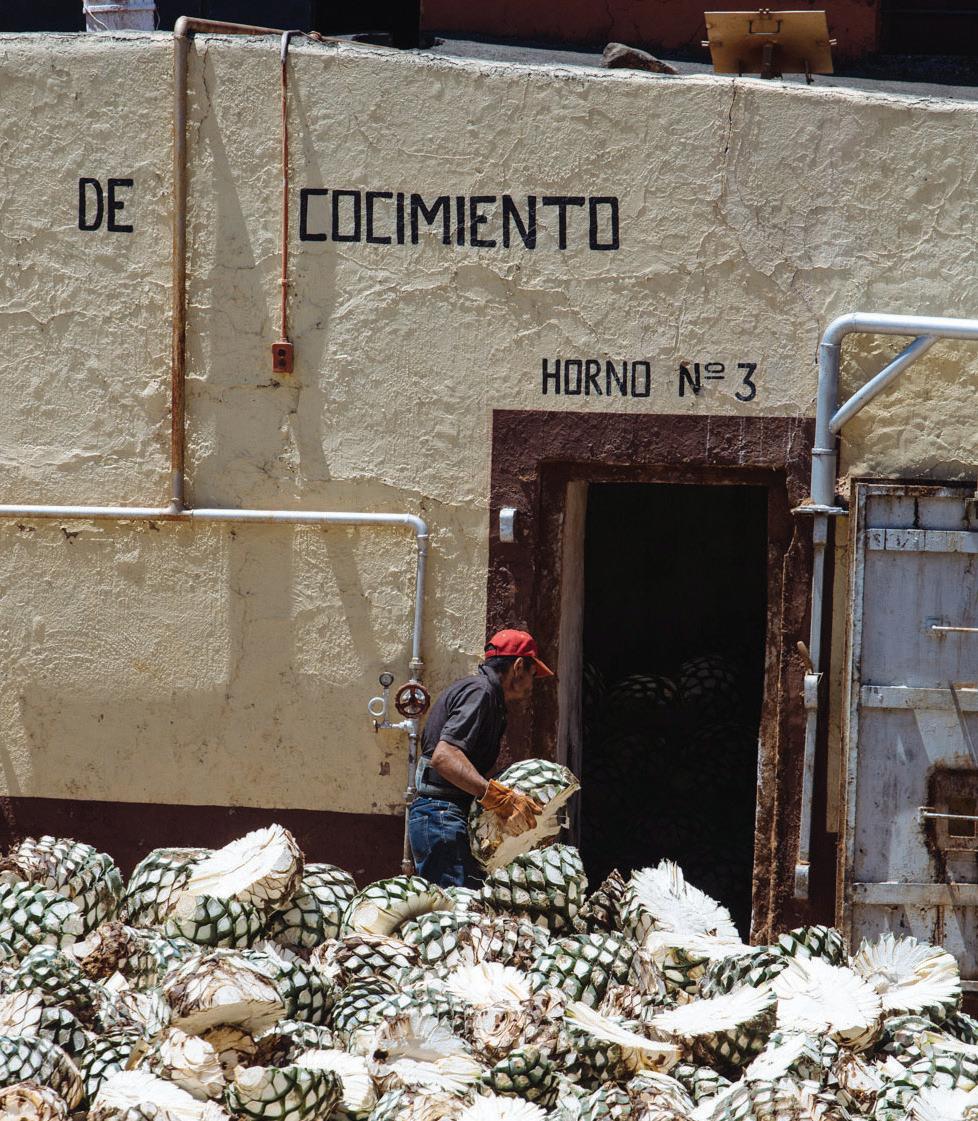


Kami Kenna completed a master’s degree in Food Studies from New York University where her focus was on the traditional beverages of Latin America, Kami Kenna has lived in Latin America for work since 2015. She is the Senior Tour Coordinator for Experience Agave, a boutique agave-spirits tour company in Mexico, an owning-partner of the women-owned Peruvian pisco brand, PiscoLogía, and a Pan-American beverage industry consultant with clients in Peru, Mexico, and Brooklyn.
Works Cited
Bruman, Henry J. Alcohol in Ancient Mexico. Salt Lake City, University of Utah Press, 2000.
Szczech, Clayton. A Field Guide to Tequila: What it is, Where it’s from, and How to taste it. New York, Artisan, 2023.
Carruthers, Nicola 2024, IWSR: agave pricing ‘will not hit rock bottom until 2026,’ media release, accessed 15 April 2024, <https://www.thespiritsbusiness.com/2024/04/iwsr-agave-pricing-will-not-hit-the-bottom-until-2026/>

BY PEDRO MANUEL PÉREZ JUAN
The colour, aromas, and taste of the Mediterranean Origin
Originating in the eastern Mediterranean, saffron was most likely brought to the Iberian Peninsula by the Phoenicians, Greeks, and Romans. However, the Arabs were responsible for its popularisation throughout the region. Over the centuries, the plant adapted in a particular way to the soil and climate of La Mancha, and, like Don Quixote, became an intrinsic part of its identity, culture, and gastronomy.
Since at least the 20th century, Spain has been known globally for both the quantity and quality of its saffron. A special mention must be made to the provinces of Albacete, Cuenca, Ciudad Real, and Toledo, which largely make up the production area of The Protected Designation of Origin (PDO) La Mancha Saffron. Although the amount of saffron produced in Spain has dropped drastically (from 141 MT avg. between 1901 - 1905 to 1.1 MT in 2023), the prestige of Spanish saffron’s unique properties remains undisputed.
The PDO La Mancha Saffron
The economic importance of this sector, fraud prevention and the need for specific commercial regulations, saw the Spanish government implement strict legislative regulations in the mid-20th century, adapting to market changes and the creation of the PDO La Mancha Saffron in 1999. Finally, in 2015, this regulatory system was repealed due to the necessary harmonization of foreign trade regulations for all EU countries.
The PDO La Mancha Saffron was formally recognised in February 1999 and registered in the EU’s Protected Designations of Origin Register in March 2001. The PDO La Mancha Saffron production area covers the entire province of Albacete, most of Cuenca, and approximately 50% of the provinces of Toledo and Ciudad Real (area shown in yellow in image 1) .

In the climate conditions of La Mancha, where saffron is grown, saffron flowers - also known as “roses” by producers - bloom between the second half of October and the first half of November.
Each day, the flowers are harvested by hand as part of successive trips across saffron fields, starting in the early hours of the day, until all the flowers in bloom at dawn are removed before the sun is at its strongest. The flower must be removed by precisely and fearlessly pinching the lower end of the calyx. The flowers are then delicately placed (taking care not to crush them) into ventilated containers, traditionally wicker baskets (image 2). They are then transported swiftly to the facility where they are pruned.
This process consists of manually removing the three stigmas from the rest of the flower, though keeping them joined at the base by a small pale-yellow piece of the style that remains. The harvested stigmas are placed into a container until the next stage: dehydration (image 3).
Unlike saffron from other countries, the dehydration of the stigmas in the production area of the PDO La Mancha Saffron involves roasting. A gentle heat is applied to the stigmas, which prolongs the stability of the spice due to its minimal moisture retention, as well as the unique organoleptic properties for culinary creations (image 4).
The decisions in the roasting process rely on the experience, traditions, and ancestral knowhow of producers; it involves making decisions depending on the spice’s appearance as it undergoes this heat treatment. Roasted saffron is stored quickly and efficiently using containers that isolate it from moisture and light, at a moderate ambient temperature.
For producers to supply saffron that can be marketed under the protection of the PDO La Mancha Saffron, as required by EU legislation, they must annually pass a technical and documentary inspection performed by an independent control body.





The packaging and marketing of saffron covered by the PDO La Mancha Saffron meets the following requirements:
1. Only saffron that is supplied by producers who pass PDO La Mancha Saffron’s annual inspection process is authorized for sale.
2. It is only sold in threads, never powdered.
3. Packets contain a maximum of 100g and cannot be sold in bulk.
4. The packaging deadline is 31 December of the calendar year following the year in which the saffron was produced.
5. Each packet has a traceable, numbered label on the back (image 5).
6. Packaging plants are equipped with effective internal control systems, meaning that the saffron made available for sale meets all the requirements of the PDO specifications. They must also pass an annual audit carried out by an independent control body in line with EU legislation.
PDO La Mancha Saffron comes with a triple guarantee: the saffron was grown in Spain; it boasts maximum quality in terms of color, taste, and aroma; and it is subject to an exhaustive control system that eliminates any risk of product fraud.
Saffron from La Mancha is widely used in culinary creations, like savory and sweet dishes, alcoholic and non-alcoholic cocktails, and infusions and herbal teas. While saffron can potentially add a yellow hue, bitter taste, astringency, aroma, and a flavor-enhancing effect to dishes, the end result will largely be determined by how it is used, though this will logically depend on the other ingredients used in the dish.
Below are the guidelines that must be followed to ensure the effective and efficient use of this spice, regardless of the type of dish.
1. Before use, La Mancha saffron stigmas cannot be toasted. Applying direct heat to plant material that has already been toasted results in the destruction of its tissues and their potential organoleptic properties.
2. The stigmas must be finely crushed before use. This achieves the effective and rapid distribution of the substances responsible for saffron’s organoleptic properties..
3. To enhance the color of the dish and ensure other organoleptic properties are released, with the exception of the aroma, make an infusion by placing the crushed saffron in fat-free water at about 60 ºC. It must be left at room temperature long enough for all the color to extract. It can then be added to the dish being prepared.
4. To give saffron an aroma and ensure other organoleptic properties are released, with the exception of color, add the crushed saffron to a type of fat and heat it at a temperature and length of time compatible with the type of fat so as to avoid its distortion.
5. As can be seen above, the conditions for extracting color and aroma from saffron are opposite; the former is soluble in water while the latter is soluble in fats.
6. Alcoholic beverages favor the release of colour and inhibit the release of the aroma - to an extent - given the chemical characteristics of ethanol.
Image 6 shows a traditional dish from the area in which DOP La Mancha Saffron is produced: gachas.

Pedro Manuel Pérez Juan obtained a Doctorate in Chemical Sciences from the University of Córdoba, in Spain. He is a consultant and trainer in the agri-food sector, specializing in food quality and safety. He managed the La Mancha Saffron PDO from December 2013 to February 2023.

BY GREG FERRARA
Independent grocers are at the heart of their communities, with a high degree of trust between retailers and their customers
Many of these grocers are institutions that have provided jobs and groceries for multiple generations of families and are relied upon not just as a source of food, but also the provenance behind those products. As such, independent grocers must take the utmost care and attention when selecting the products they sell in order to deliver on that trust and earn their customers’ loyalty year after year.
At the heart of this relationship are authentic food products - those that are locally grown and produced, as well as genuine imported items from around the world.
American consumers are increasingly interested in knowing where their food comes from. This presents an opportunity for retailers to tell stories that connect the consumer to the product. For example, local farmers supplying fresh produce can host retailer associates for
farm visits, allowing the associates to learn more about the fruits and vegetables they sell, which they can then share with their shoppers. Another example could be an olive oil from Italy with a story about the producer, their methods, their authenticity and their history, which can help create a powerful bond between the consumer, the retailer and the producer.
In turn, this bond helps drive a great economic engine throughout the United States. Independent grocers generate more than $250 billion in annual sales - a third of the overall supermarket industry - and are responsible for more than 1.1 million jobs that pay nearly $42 billion in direct wages and generate more than $36 billion in tax revenues for federal, state and local authorities. There’s a lot at stake for everyone involved in this partnership.

“American consumers are increasingly interested in knowing where their food comes from. This presents an opportunity for retailers to tell stories that connect the consumer to the product.”
The National Grocers Association (NGA) helps connect unique brands to its members looking for those special products by featuring key exhibitors at the annual NGA Show, as well as partnering with groups such as the ItalyAmerica Chamber, to connect authentic producers to US retailers.
Recently, I was part of a delegation of NGA
Additionally, opportunities like this allow American grocers to witness food production at its source, as well as observe how their foreign counterparts engage their customers. To drive traffic and loyalty, food retailing must be about more than just selling - it must be theater; a sensory experience that excites the consumer with sights, smells, and stories; it gets consumers enthusiastic about food and









Greg Ferrara is president and CEO of the National Grocers Association, the national trade association representing the retail, wholesale and supplier companies of the independent sector of the supermarket industry. With NGA since 2005, Ferrara brings a wealth of experience in the grocery industry, having managed his family’s century-old supermarket in New Orleans before the store was destroyed by Hurricane Katrina.
BY ALBERTO MARRASSINI
Introduction
At Coop Italian Food, we understand the significance of preserving the essence of Italian cuisine while embracing the growing demand for healthier choices.
Italy and Europe have been at the forefront of regulations and the use of healthier ingredients, making authentic Italian products a reliable choice for those seeking both authenticity and wellness. Join me as we explore how Coop Italian Food ensures genuine flavors while incorporating health-conscious options.

Italian Sounding refers to products that are marketed as Italian but do not originate from Italy. This misleading practice significantly impacts the global market, and according to the ISMEA’s (Institute of Services for the Agricultural and Food Market) comprehensive 2023 study, this practice accounts for about $97 billion worldwide, in contrast to genuine Italian food exports totaling around $64 billion. This deceptive practice dilutes the perception of Italian food, specifically in the USA, where Italian Sounding is valued at around $10 billion, accounting for about 60% of all Italian food products on their supermarket shelves; conversely, genuine Italian food exports approximate $7 billion. This misleads consumers and diminishes the prestige of genuine Italian food products.
With deep roots in retail, Coop Italian Food is committed to preserving the authenticity and traceability of Italian products. We recognize the importance of preserving the reputation of genuine Italian cuisine, especially in categories prone to counterfeiting. Our extensive experience with Private Label, and our strong network of manufacturers, allow us to bring authentic Italian food to American consumers, ensuring that our products accurately represent Italian culinary traditions with the highest quality standards.

“At Coop Italian Food, we understand the significance of preserving the essence of Italian cuisine while embracing the growing demand for healthier choices”
Italian cuisine is celebrated for its naturally wholesome ingredients. As consumers’ demand for quality and authenticity in their dietary choices is growing, the Italian food industry develops products with high-quality ingredients able to meet specific nutritional needs, such as gluten-free, organic, and vegan options, while maintaining the traditional flavors that define genuine Italian cuisine. By advocating for the authenticity and integrity of our foods, we also contribute to offering better, healthier choices that cater to the evolving preferences of today’s consumers. Our commitment to health-conscious choices reassures consumers that they can trust our products to meet their dietary needs without compromising taste.
At Coop Italian Food, we believe in empowering consumers to make informed decisions about their food. We actively engage in awareness campaigns to educate consumers about the Italian-sounding issue and the importance of authenticity. By promoting transparency and providing information on the origin and production processes, we help consumers distinguish between genuine Italian products and misleading imitations. This knowledge empowers individuals to choose products that align with their desire for authenticity and health, leading to a healthier and more sustainable food industry.

by
To further enhance our efforts, we are actively considering the following additional strategies to combat Italian Sounding:
1. Geographic Indications (GI) visibility: Geographic Indications such as PGI (Protected Geographical Indication) and PDO (Protected Designation of Origin) are certifications given to products that originate from a specific geographical area. These products possess unique qualities, historical significance, and a positive reputation associated with the region and its community. We make sure those seals are visible as they are crucial in the fight against Italian Sounding.
2. Digital Traceability: We are committed to implementing robust digital traceability systems that provide consumers with accessible, transparent information about the lifecycle of the products they purchase, allowing consumers to trace the journey of our products - from farm to table - ensuring they are getting exactly what they expect: genuine Italian products.
3. Digital Marketing and Consumer Education: We are expanding our digital marketing efforts to engage more effectively with our consumers through targeted campaigns and educational content.
Authenticity and health are two essential pillars of Italian cuisine, and Coop Italian Food is dedicated to preserving both. Our commitment to genuine Italian flavors and our focus on incorporating healthier choices allow us to meet the evolving needs of today’s consumers. By partnering with small-scale Italian producers and promoting transparency, we ensure that our products represent Italian culinary traditions. Whether you’re searching for authentic flavors or seeking healthier options, Coop Italian Food is here to provide you with a wide range of choices that celebrate the authenticity and wellness of Italian cuisine.
Buon appetito!


Alberto Marrassini has been part of the Coop Italia group for over 20 years. Since 2019, he has been the CEO of Coop Italian Food North America and Italian Food Canada. Prior to this role, Alberto led the Asian global sourcing team Coop Far East, with over ten years of assignment in China, Hong Kong, and Vietnam, in the development of Coop Non-Food private label products. Earlier in his career, he held several positions in purchasing and sales across the Non-Food spectrum.
BY GIULIA PEROVICH
In an age where the origins of our food are as diverse as the flavors that decorate our plates, the path from provenance to palate has never been more significant.
As a PR and communication professional dedicated to promoting Italian brands in the US market, I’ve witnessed firsthand the growing demand among American consumers for high-quality food and transparency. This isn’t a fleeting trend; it’s a movement towards sustainability, health, and authenticity that’s reshaping the culinary landscape. Consumers are increasingly conscious of the environmental impact of their food choices and seek out products that are ethically sourced and minimize carbon footprints. Moreover, the traceability of ingredients has become a priority, driven by concerns over food safety, quality control, and a desire to support local economies. If you can pinpoint where your food was grown and produced, you can make more informed decisions - even down to the nutritional value of your food!
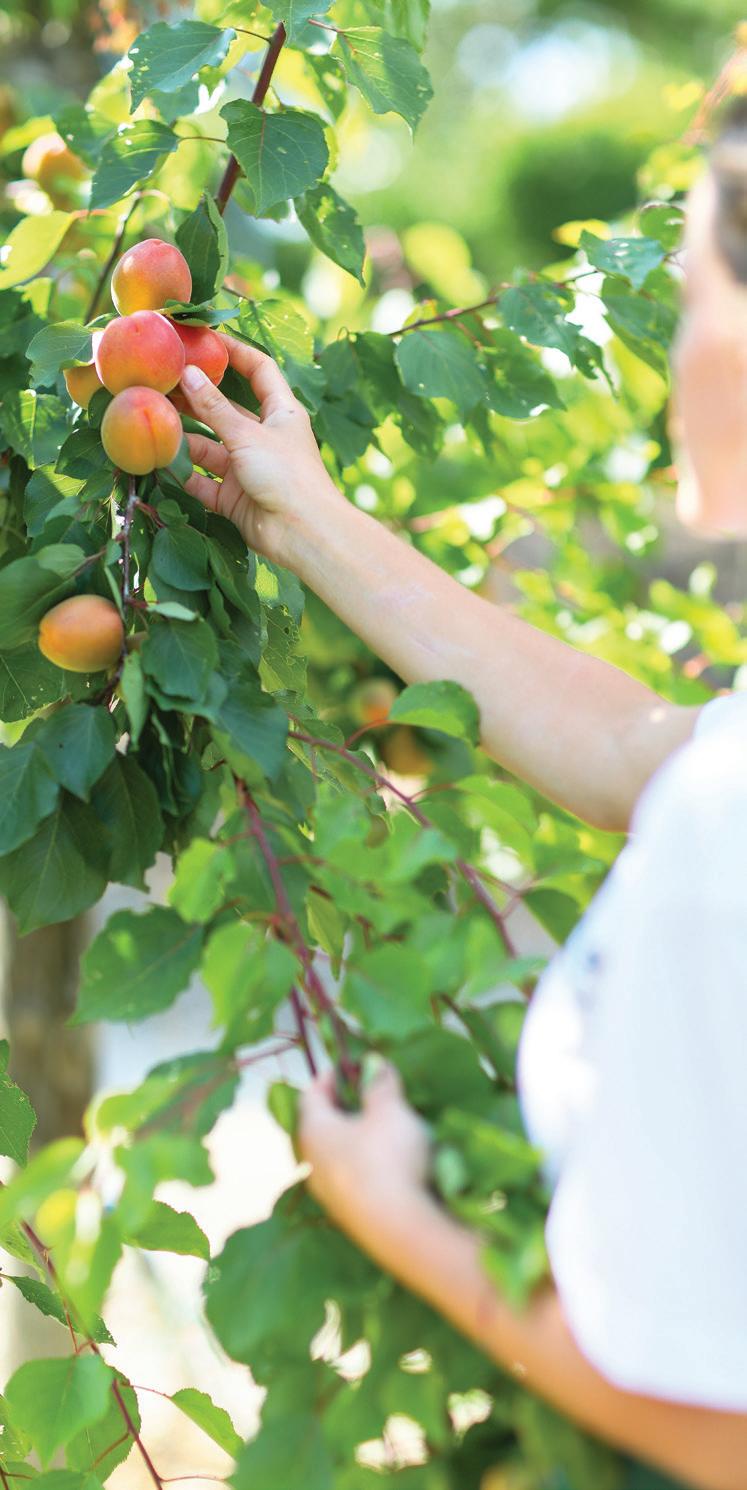
For those of us involved in promoting Italian brands abroad, especially in the U.S, this consumer trend offers a unique opportunity. The American fascination with Italian cuisine is not just about the taste— it’s also about the rich history, the artisanal production methods, and the deep-rooted culinary traditions that Italy represents.
My role goes beyond storytelling. I’m tasked with bridging cultures, building relationships, and crafting narratives that highlight the value of Italian food traditions in the American market. It’s about conveying the passion, the craftsmanship, and the sustainable practices that have been handed down through generations, resonating with consumers who seek out authentic, high-quality products with a narrative they can connect with.
I prefer to view PR through a much broader lens, not merely through that of traditional press office activities. This expansive view of PR challenges us to seek innovative spaces where we can educate and influence. For example, engaging with esteemed institutions like the Culinary Institute of America offers a direct channel to those passionate about food, where the stories behind the ingredients are just as worthy of the limelight as the flavors that define them. By fostering partnerships with educational institutions, we can impart knowledge, share techniques, and inspire the next generation of culinary enthusiasts to appreciate the rich tapestry of Italian culinary heritage.

Moreover, it means reaching out to other communities and cultures for whom the origins of food are fundamental, such as the Japanese community, and working together to discover how we can collaborate with chefs old and new to elevate dishes from their respective traditions through crosscultural fusions. These fusions can add depth, history, and value to the dishes, with the common thread being the importance of knowing where food comes from, while remaining open to embracing influences from other traditions. By celebrating the stories behind ingredients and their provenance, we can create unique culinary experiences that blend the best of multiple cultures, fostering a greater appreciation for the diversity of global gastronomy.
The movement towards authenticity and quality has been particularly evident in the rise of the ‘Made in Italy’ label. This label plays a crucial role in our PR efforts, serving as a badge of authenticity and excellence that distinguishes Italian brands from those in the highly competitive US market. The passion for Italian food in the United States is a testament to the successful melding
of Italian culinary traditions with American tastes, underscoring the importance of continuing to promote the authenticity and regional diversity of Italian cuisine. The ‘Made in Italy’ label signifies superior quality and craftsmanship, and carries with it a sense of cultural pride and respect for the traditions that have shaped Italian food.
Moving forward, challenges and opportunities lie in maintaining a connection to tradition, whilst innovating and adapting to evolving American consumers’ preferences.
The journey of food from origin to our tables is a tale of tradition, craftsmanship, and cultural exchange, one that highlights the importance of knowing where our food comes from, and of nurturing a deeper appreciation for Italian culinary heritage. By finding a balance between preserving the essence of Italian traditions and striving for constant innovation, we can create a harmonious fusion that resonates with modern palates while honoring the country’s cultural legacy.

“The American fascination with Italian cuisine is not just about the taste—it’s also about the rich history, the artisanal production methods, and the deep-rooted culinary traditions that Italy represents.“


Giulia Perovich is the passionate founder of Arnald NYC, a PR and communications boutique agency fueled by her Emilia-Romagna roots and lifelong love of hospitality. Named after her favorite childhood eatery, Arnald NYC embodies Giulia’s commitment to crafting client experiences through targeted messaging, strategic networking, media planning, and storytelling across multiple platforms. Among her current clients are Acetaia Giusti, Consorzio del Parmigiano Reggiano, Giadzy by Giada De Laurentiis, Ferrarini, and Palazzo di Varignana. www.arnaldnyc.com
BY SILVIA D’ALESIO
People have a growing desire to deeply understand what they usually eat or drink. They are seriously interested in knowing where products come from, and whether they were produced in an eco-friendly and socially responsible way. Moreover, each brand should provide services and involve processes that support the environment. For this reason, a good question concerns what an honest approach means when a brand must clearly communicate its actions directly to the consumer.
This special issue invited me to reflect about the stories behind food brands. However, food brands have the task of including large amounts of information on labels, such as: ingredients, flavors, and traditions that shape meals, and which draws attention to the importance of fostering a connection between consumers and producers of our nutrition. Packaging represents the strategies through which producers can reinforce their contact with consumers, especially regarding proper utilization practices and safeguarding the environment.
Much attention was therefore paid to the recycling regulations based on the country of destination, product life cycle, and carbon footprint. Taking a closer look at new technologies, we can change the traditional functions of packaging, making it more than just a protective casing, but also a way to interact with the consumer and support sustainable habits.

In recent years, the topic of sustainability has become increasingly important. So, what do we mean by sustainability? And especially, why do we associate it with innovation in order to orient packaging design? A new approach to development is required, with the aim of meeting the needs of the present generation without compromising those of future generations. In this sense, sustainability could be considered as the intersection of the three sets: environmental, economic, and social. Food trends pointing to the future are centered around themes of innovation and sustainability for contributing to reducing the over marketing services and taking positions against a production system that is not compatible with the well-being of the planet. So what can a food company do in the future to create circularity through a packaging solution?

Several research and innovation projects are focusing on the utilization of raw material waste, possibly that the company itself produces. According to recent data shown by the DNV (Det Norske Veritas), more than 43% of the companies’ sampled including those in the food sector from Europe, America, and Asia, are integrating the Circular Economy into their strategies with the scope of protecting the environment. Perhaps it is precisely in analyzing the meaning of the word “protection” that the need to review packaging begins, not only as a communication tool or medium. Thus, the objective is not only that of preserving and protecting products, but also to identify products of the same type and favor their choice within an increasingly competitive market, where the customer has less and less time to devote to product selection, and which communicates at a glance the consumer’s needs. Specifically, food packaging is the application of protection to foodstuffs, allowing them to avoid contamination from the external environment and maintain their characteristics. Additionally, packaging design provides the customer with a quality experience and strengthens the bond between the consumer and the brand.
Packaging capable of adapting to the objectives of the circular economy, capable of reducing environmental impact, both at the stage of its production by reducing CO2 emissions and at the end of its use thanks to the possibility of recycling or reuse.
But what do we mean by Eco-Packaging or sustainable packaging? We mean sustainable packaging made from renewable, natural, or recycled materials- without additional packaging and with a focus on size so that smaller products can be packaged in flexible packaging. However, eco-packaging must not lose sight of the main mission: the packaging must protect the content and at the same time inform and attract the consumer, enticing them to buy.
The issue of sustainable packaging has taken center stage in the policies of the European Union and most industrialized countries, leading to a re-evaluation of certain areas of the industry, seeking alternative methods to minimize environmental impact; in particular the use of plastics- or polymers- in packaging, as it accounts for 40% of European plastics production (Plastic Europe Market Research Group data for 2012). Numerous projects are already doing research to develop innovative and alternative materials for different types of packaging for food products, i.e. food packaging. This represents a key component in the food and beverage preservation system, however, to be used for this purpose, alternative materials must meet the same requirements as traditional materials. For example, in Italy there are research groups working on ways to transform fruit and vegetable waste into 100% biodegradable plastic. Thus, waste such as orange peels, coffee grounds, chaff (a by-product of cereal processing) from rice- even parsley, maize, or tomatoes - can be used to produce bioplastics. The agro-food industry produces tons of waste from vegetable peels and seeds which can be used to make bioplastics and other sustainable materials for 100% compostable packaging (compostable bioplastics, according to UNI/ EN13432, can be recycled as organic waste in wet waste).

The selection of raw materials with high added value, and the identification of vegetable waste and industrial pollutants as a harmonious source of alternative products, is a challenge that will add additional value to the product. Currently, the drying of processing waste from the canning industry is the most popular approach for fertilizer production. Thus, processing waste from food processing companies is a great source for alternative raw materials such as paper for example. Various projects have been initiated to reduce waste in this production system, for example, paper derived from agro-food waste to have boxes with recycled food fiber Implementing a highquality paper line: (or FSC™ certified and zero-emission thanks to the neutralization of residual CO2).
Another product that we can make from the waste of agri-food companies are bio-paints, which can be used to protect food packaging made of metal. To date, the paints used are derived from synthetic compounds made from petroleum, materials that are unsustainable and polluting, but also unsafe for human health. Some companies in Europe, in order to make their products more environmentally friendly and reduce their environmental impact, have come up with new solutions starting with their raw material production
food waste, such as orange peels or coffee and maize processing residues, is reused to make green paint.
The new idea led to the creation of packaging that addresses the need to change our lifestyles by paying more and more attention to sustainability. e.g., how to replace a glass bottle with a new cylindrical container made of pressed paper made of vegetable fiber from industrial processing waste, basically peels, seeds, and other inedible waste. It is then coated with bio-paints that make it impermeable to contain liquid products without damage. This results in packaging derived entirely from waste material, without the use of new raw materials, totally biodegradable and 100% recyclable; a packaging that can be thrown in the waste bin and that if it were to be dispersed in the environment, it would neither be harmful nor damaging to the ecosystem.
My primary goal was to highlight how utilization and production practices represent a willingness on our part as citizens to change how we relate to packaging and the products contained therein. Our relationship to packaging can be a useful lens through which we view our consumption and waste. From here, we can truly begin to innovate food packaging in function, material, and design.


Silvia D’Alesio is a food and packaging expert as well as an international scouter on food innovation, leading several projects regarding developing new food and beverage products and businesses. She has earned a BSc. in Food Sciences and Technology along with an International MSc. in Food Innovation and Product Design. Her work includes research projects and scientific direction for Digital Food Ecosystem and FoodTech European Events; assistant professor at the University of Milan Department of Nutrition and Environment; and Professor of Futures Studies and Brand Packaging Design at NABA, Milan.
BY STEPHANE PASSERI
Geographical Indication (GI) is an intellectual property right but also a quality scheme protecting the identity of countries’ origin-linked products. These products have developed unique characteristics resulting from the optimization of interaction with the local eco-system/environment, including local biodiversity, and the use of producers’ local knowledge and cultural heritage.
Legal protection of Geographical indications - mostly referred to as “Appellation of Origin” - emerged in Europe at the beginning of the 20th Century as a tool to both protect producers against unfair competition and consumers against deception. These unfair competition and consumers’ deception were caused by the wrongful use of reputable origin-linked products’ names, often sold at a premium, due their unique characteristics/ quality inherited from their place of production.
Today, Europe remains the leading region of the world both in terms of number of Geographical Indications (GI) registered for agricultural, food, wine, and spirit products and the economic turnover generated. This leadership is soon to be challenged by another part of the world; Asia. Actually, as we speak, the Asian region is already well ahead in terms of number of GI registered for non-agricultural/ food products such as for handicrafts.
During the past two decades, interest in enhanced protection of GI has rapidly increased worldwide, particularly in Asia.
Often perceived originally by countries in the region as an imposed compliance requirement to join the concert of nations adhering to the principles of the World Trade Organization in general and its Trade Related Intellectual Property Rights (TRIPS) Agreement, it later materialized as an interesting tool for developed and less developed countries.
As a result, countries have increasingly put in place GI national laws and registration systems resulting in an increased number of GI (over 500 in India or among ASEAN countries alone) being already registered in the region. From Japan to Iran, Mongolia to Sri Lanka, Thailand to China, India to Indonesia, countries in the region are actively engaged in developing their national GI systems, protect, and promote national GIs domestically and internationally together with increased producers and consumer awareness on the fundamental benefits of the GI protection and GI protected products.

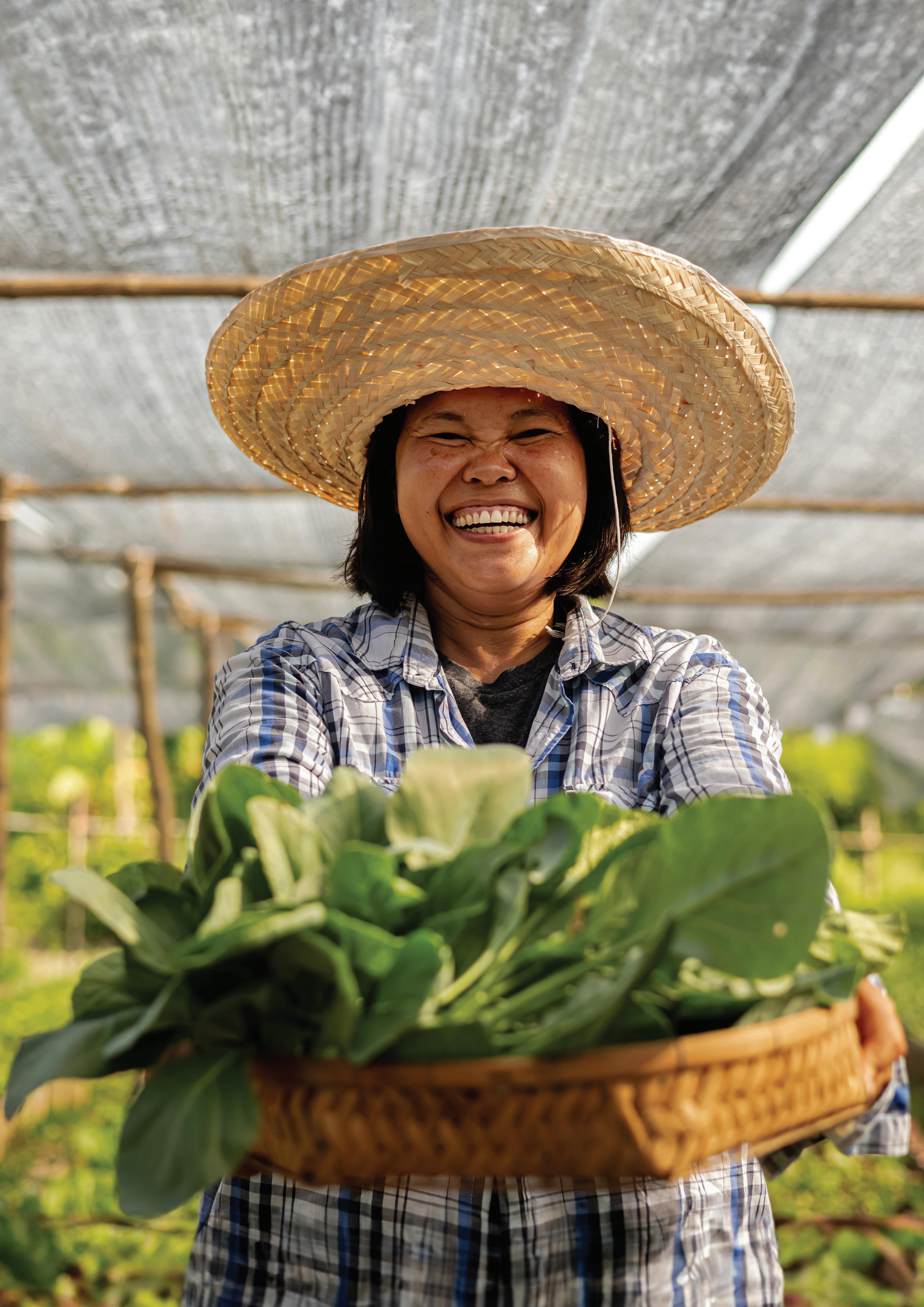

Some prominent examples of GIs in the region include Kampot Pepper (Cambodia), Darjeeling Tea (India), Long-Ging Tea (China), Nuoc Mam Phu Quoc (Vietnam), Doi Chaang Coffee or Isan Indigenous Thai Silk Yarns (Thailand) or Kobe Beef (Japan) as numerous countries, with different economic development situations, share the same interest in developing highquality products related to their geographical origin, and have engaged in the identification of GI as a common tool to access the international market.
To set up their national GI system, countries often face several important challenges , such as gaps in the regulatory and institutional framework for GI application, control, and protection, coupled with the existence of fragmented value chains and a lack of support to farmers to improve the quality of their products and access attractive markets. A collective and inclusive organization representing all members of its value-chain to agree first on what the GI specifications/ standards should be, and collectively own and manage the GI rights (including implementing traceability and control procedures and collective promotion of enforcement procedure to the benefit of all producers) is key for the subsequent success
When I started working with authorities and producers in Thailand 25 years ago, as well as later on in many countries in the region, numerous challenges existed, starting with the lack of the understanding of the GI concept, the general lack of knowledge on Intellectual Property Rights at large, limited habits of collective and inclusive actions or lack of traceability and sound control mechanisms. As Thailand celebrated, in 2023, the 20th Anniversary of its national GI system, we can see what has been achieved since then. In February 2024, Thai authorities announced national GI sales amounting to 50 billion baht (US$1.39 billion) in 2023 with 60 billion baht targeted in 2024 with 20 additional GI expected to join the 200 GI currently registered in the country. This confirms GI development as a key tool to enhance the country’s competitiveness of the agricultural sector to add value to crops with geographical or cultural significance, subsequently leading to job creation and sustainable income and job generation for Thai farmers.
For producers, GIs encourage diverse agricultural, food and handicraft productions. For many previously engaged solely in the commodities trade, often at their disadvantage, GI products offer a new opportunity in market diversification and segmentation as well as in generating more sustainable income to local producers and communities. They also contribute to the socio-economic dynamics in the area by enabling producers to generate and commercialize traditional products with higher premiums, focusing first on quality rather than quantity, in response to the demand of quality-conscious consumers as value-added GI products command higher market prices compared to raw commodities.
In addition, GIs are viewed to facilitate the conservation of natural resources, biodiversity and the preservation of traditions and cultural heritage, representing an important instrument for preserving local wisdom and encouraging tourism development.
For consumers, GI products appeal to upper/ middle class customers, expatriates and tourists (both domestics and foreign) which enjoy both higher disposable incomes and attraction for origin-linked products in which they recognize an interest in term of “quality”, uniqueness, tradition and/or attachment to certain values (i.e. production practices, inclusiveness, promotion of biodiversity, sustainability, preservation of local wisdom and heritage. etc.) and for which they are willing to pay a premium for as long they can trust the information provided.
Knowing that the middle class in Asia is expected to represent over 60% of the world middle class in the coming decade

(in comparison to less than 30%, 15 years ago) with attached implications on tourism development and tourists’ profiling, GI products can expect booming demand and valorization in Asia but also in the rest of world.
Governments have started to increasingly promote their national products’ visibility and exposure using GI products as a flagship for national excellence and identity. These labels (see examples below) are created by authorities to collectively support the visibility and promotion of national GIs.








Additionally, there are other initiatives to support the promotion, control, and protection of GIs domestically and abroad. These initiatives include international registration or bilateral agreements. The creation of GI Facebook pages (e.g., Thailand) or GI dedicated websites (e.g., Japan) is part of these efforts. Public-private partnerships with major local retailers or online selling platforms are examples of initiatives developed in the region. These initiatives aim to further support GI awareness and development.

Stephane Passeri is a French expert in Geographical Indication (GI). He currently leads regional GI projects for the FAO in Asia and the Pacific from Bangkok, Thailand. With over 25 years of experience, he has significantly shaped Intellectual Property Rights and GI frameworks across numerous Asian countries. Since 2013, he has managed several FAO projects to promote rural development through GIs in the region. In 2017, he was awarded the Knight of the Order of Agricultural Merit by the French Government for his contributions to agriculture. Previously, he served as an independent consultant and chairman of the IPR Working Group at the European Association for Business and Commerce in Thailand. Mr. Passeri holds advanced degrees in Economics and Finance from the University of Nice-Sophia Antipolis.

BY LUCIA MAZZI
In a world in which food producers continually face new challenges in terms of quality, health, environment, and safety, the pressure to offer consumers qualitatively valid and competitive products is becoming increasingly stronger.
When I talk about new challenges, I am referring to increasingly prepared and demanding consumers, and a market that is undeniably affected by the pressures exerted by the IT world, which can, unfortunately, often become a source of misinformation compared to real-world conditions. Furthermore, we must not forget that we often have to deal with the complexity of extended supply chains, which make global control over suppliers increasingly difficult.
In the world of oil in the last 10 years, I have seen increasingly difficult challenges arise with respect to a request for transparency and traceability on all fronts by customers and certification standards, and the analytical parameters to be tested become more restrictive. The market requires constant commitment to eclectic aspects: quality, safety, environment, sustainability, and many others.
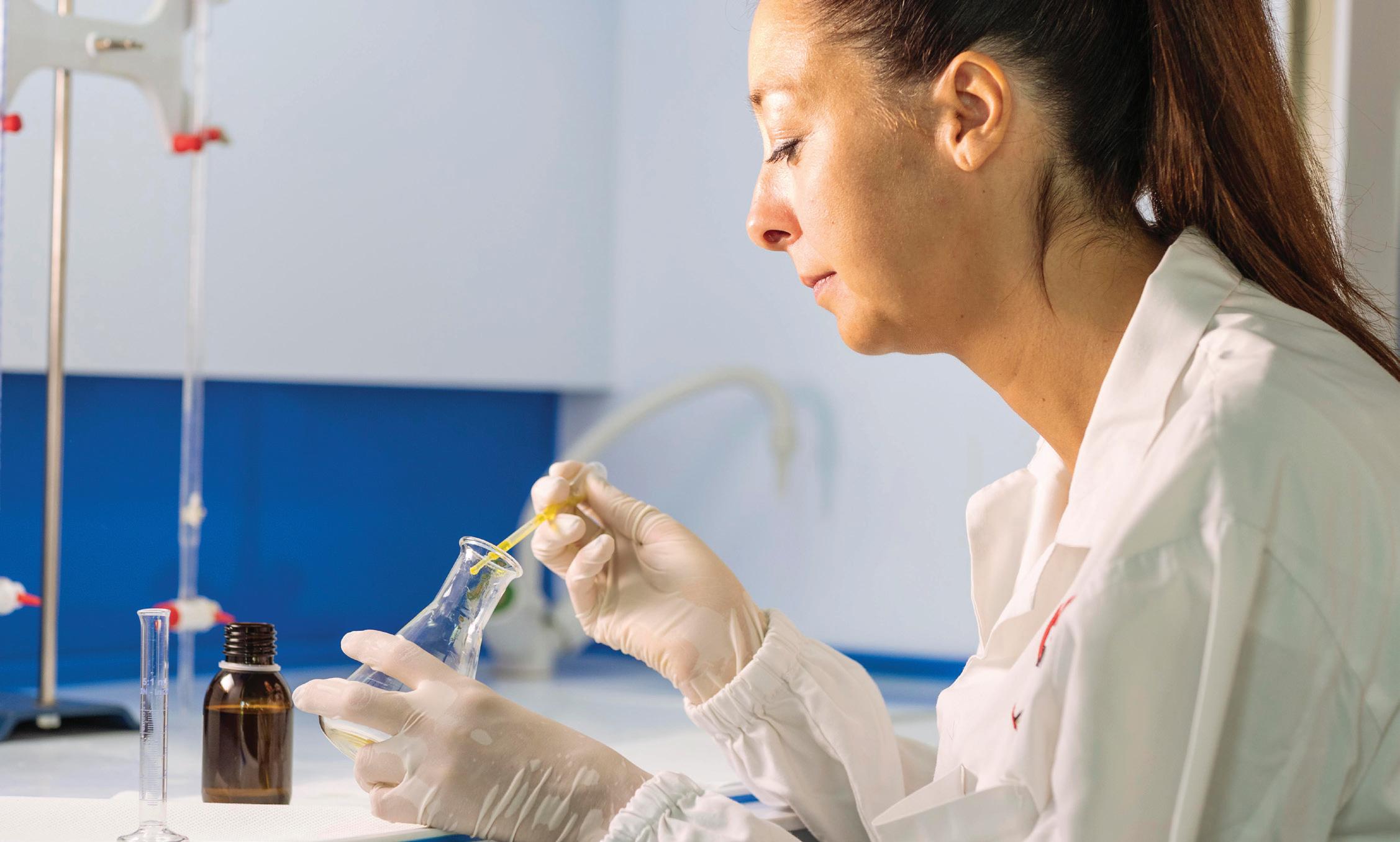
Over the years, the realization that a wellstructured quality management system is crucial to a company’s success in global markets has gained traction, especially in the food sector.
Acquiring internationally recognized certifications and implementing strong quality management systems have become intrinsic parts of business strategy. They allow companies to differentiate themselves from competitors, attract new customers, and navigate increasingly complex and dynamic supply chains and marketplaces.
Product certifications such as Organic, GMOfree, and Gluten-free are among the most recognized by the general public today, but there are a multitude of other certifications that are less visible yet extremely complex and important. Although retail shoppers may not be familiar with these standards, they significantly contribute to enhancing the safety of the food supply chain.
Most of the quality standards that play a crucial role in the agri-food sector are recognized by the Global Food Safety Initiative (GFSI) body.
The GFSI was founded in Belgium in 2000 with the goal of establishing a global food safety standard. The GFSI standards allow companies to sell safer foods in their markets, and are particularly effective for large-scale retail trade. All these standards include a risk assessment based on the HACCP (Hazard Analysis and Critical Control Points) and HARPC system (Hazard Analysis and Risk-Based Preventive Controls); the implementation of a documented quality management system and monitoring systems for environments; and personnel and products along the entire supply chain. Quality control is essential for every aspect of a company, and QA managers need to be constantly updated on the latest production technologies, products, and regulations.
When developing a food safety and quality strategy, it is important to expand focus beyond procedures and hygiene regulations. This is especially true and important in the food industry, and applies to all consumer goods sectors.
Today’s concept of “quality” food refers to every aspect of a product that is presented to the final consumer. It includes the inherent organoleptic and chemical-physical properties
of the raw materials; the nutritional values and the specificities and details of the packaging; the skills of the line operators, and the training and safety of the staff employed in the supply chain. All of these factors play an important role in ensuring that consumers receive high-quality, safe, and nutritious food.
Some companies choose to invest in voluntary quality certifications to provide additional assurance to their customers regarding the reliability and quality of their products. These certifications involve independent third-party certification bodies that verify that a specific product, process, service, or management system meets a particular standard or regulations. They exceed the mandatory requirements set by national and regional authorities, and aim to give food buyers, retailers, and customers increased confidence in the products they purchase.
These certifications can be divided in two main categories:
In this category, various rules and guidelines are established to enhance the efficiency and effectiveness of company processes. One well-known standard is the ISO system, which comprises a set of regulations and guidelines developed by the International Organization for Standardization, and is recognized worldwide. In the field of agri-food, some of the most popular ISO standards include:
ISO 9001:2015 – Quality management standard
This standard defines the minimum requirements that the Quality Management System of an organization must satisfy to guarantee the level of product and service quality that it claims within the market.
ISO 14001:2015 – Environmental management standard
This standard represents the regulatory reference point for companies and organizations equipped, or intending to equip themselves, with an Environmental Management System; defines an “Environmental Management System” as part of the corporate management system aimed at managing environmental aspects, satisfying legislative compliance obligations, and addressing and evaluating risks and opportunities.
These certifications are designed to give consumers assurance about the quality of the product they purchase, usually identifiable by a callout or seal on the label. Among the various certifications available, some of the most popular ones are no-GMO, Organic, DOP, IGP, and ISO 22005.
ISO 22005 certification
This is one of my favorites, and it has been designed specifically for supply chain traceability. It guarantees the history and origin of a product, adding transparency
and authenticity to the businesses that obtain it. Companies that obtain and maintain this certification are leaders in their industry, meeting the increasing demand for transparency and traceability from retailers and end-clients.
An active and dynamic quality strategy can be an engine for change and progress in any agri-food company. It is essential not only to establish a strong presence in new markets and gain customers’ trust, but also to demonstrate the company’s leadership continuous commitment to improving their products and production processes.


The future in the food field will focus more and more on traceability, and the search for confirmation relating to the geographical origin of ingredients. Companies must find the simplest solution to demonstrate that they truly have solid foundations in this area.
I hope that company leaders increasingly recognize the importance of investing in quality. Such investments pave the way for sustained market relevance and consumer trust - two critical factors that will shape the future of their organizations.

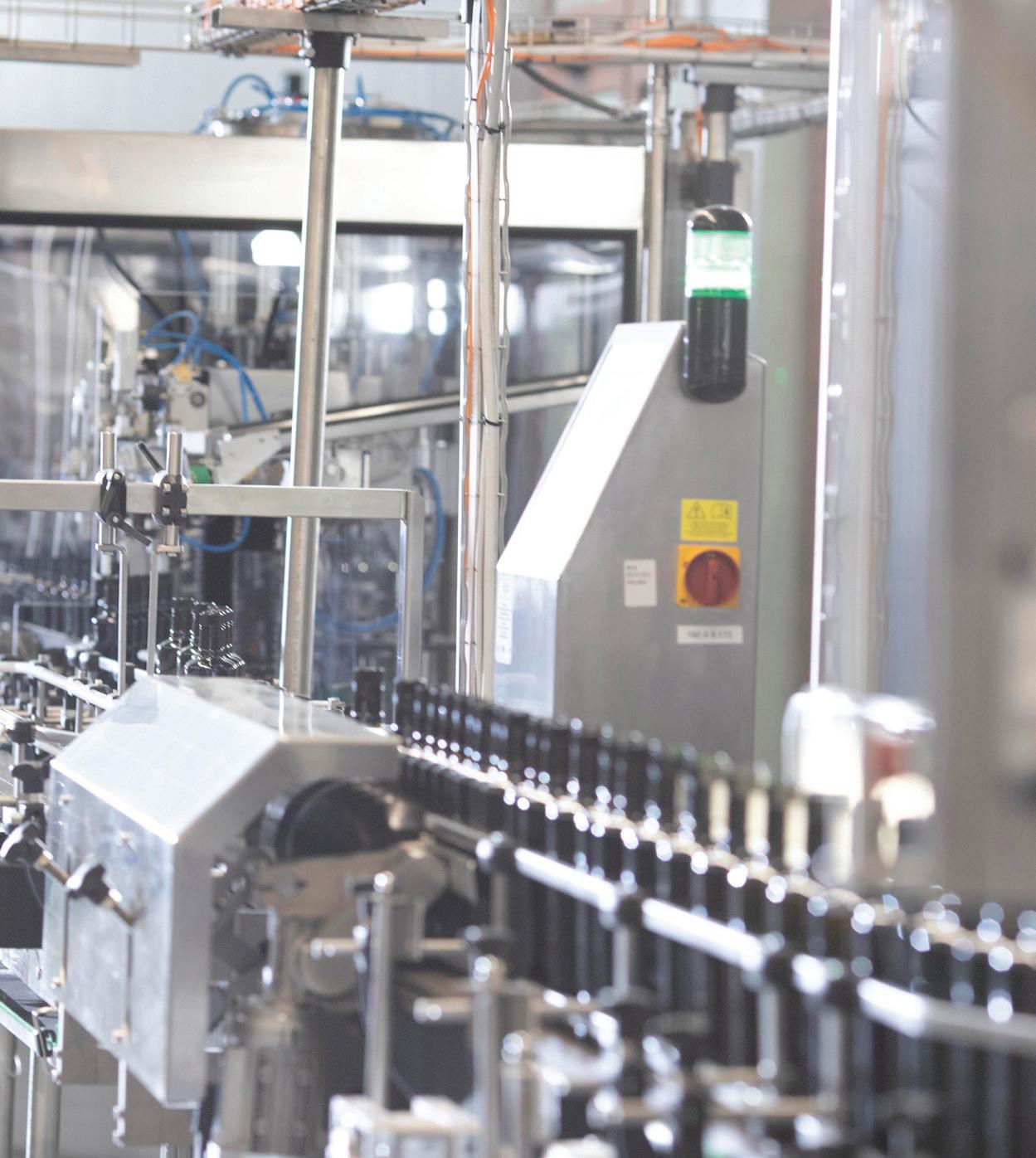

Lucia Mazzi holds a degree in Technologies and Analysis of Ecotoxicological Impacts from the University of Siena, Italy.
In 2010, she obtained an academic scholarship for a Doctorate in Medical Biotechnology, completed her PhD in 2015, and passed the state exam for Biologists in 2014, enrolling in the Professional Register the following year. During her career, she had the opportunity to broaden and share her knowledge through positions at various analysis laboratories and by teaching scientific subjects in schools.
Since 2016, she has worked with Certified Origins Italia Srl, becoming a global quality and food chemistry specialist and leader in her field, collaborating with Universities and various institutions.
Today, Lucia and her team manage the audits for several international standards, such as Organic, IFS, BRC, QIC certifications, and all aspects of food safety, traceability, and quality control for worldwide food programs.
BY ANDREA BIAGIANTI
Exploring the potential of blockchain technology in combating fraud and improving traceability of agricultural products: applications, benefits, and future challenges.
Blockchain technology is emerging as a revolutionary innovation in the agrifood sector, promising to enhance transparency and security throughout the entire agri-food supply chain. This article aims to explore the potential of blockchain in combating food fraud and improving food traceability, providing a comprehensive overview of its applications and benefits. Let’s begin by making the concept of blockchain more accessible; we could assert that the keyword underlying this technology is “cooperation.”

The embryonic roots of the blockchain concept can be traced back to the KAD network, a system that emerged around the 2000s along with other peer-topeer projects like Napster and eMule. These systems share the goal of eliminating centralized controllers and enabling each peer to actively participate in the network.
The year 2008 marked a turning point in the evolution of blockchain technology with the creation of Bitcoin by Satoshi Nakamoto. This event not only represents the official birth of the first blockchain network but also introduces the concept of “Distributed Ledger Technology” (DLT), revolutionizing the way transactions are managed and validated on a decentralized network.
While the technical specifics of blockchain, various types of networks, and consensus algorithms represent broad and complex study topics, it is essential to understand for this discussion that blockchain is essentially a distributed, encrypted, and immutable record-keeping system. At its core, a consensus algorithm harmonizes and validates data input by multiple network participants, ensuring the integrity and security of transactions.
The harmonization “stitched together” by the consensus algorithm of a blockchain allows unreliable data from many actors to be made reliable, thus reconciling them and calculating the reliable hash to establish the creation and sequence of each block.
The strength provided by the consensus algorithm allows a Blockchain network to be free from the control of a single entity, such as a single company.
Understanding these fundamental characteristics of blockchain highlights why this technology has recently been adapted for validating logistics traceability data and origin traceability within the supply chains of the agrifood sector.
In the agrifood sector, especially in high-quality products, issues related to counterfeiting and product quality can arise. This scenario can lead consumers to purchase products they believe are high quality but, unfortunately, turn out to be of lower quality.
So the crucial question is: can blockchain technology allow us to protect the agrifood supply chain, countering the multiple frauds that threaten high-quality products?
An increasingly common opinion is that companies in the agrifood sector can make a decisive choice by implementing blockchain technology in their future. There is a significant increase in proof of concepts and developments by numerous companies in the agrifood sector.
Numerous initiatives developed for product traceability systems have demonstrated the potential of blockchain technology as a tool to support PGI (protected geographical indications) and PDO (protected designation of origin) certifications.
If used well, this type of technology can revolutionize the agrifood sector, offering an innovative solution that fits well with traceability management methods and for controlling the authenticity of products, especially for highquality products such as those with PGI and PDO. Already, these certifications are born to be tracked “farm-to-table” but, by implementing blockchain, every stage of production can be accurately recorded and verified, ensuring even greater transparency throughout the entire supply chain.
This not only strengthens consumer confidence in the origin and quality of products but, as mentioned earlier, can also help combat potential fraud and counterfeiting. Additionally, thanks to advanced cryptography, information on the blockchain is protected from manipulation, archived, ensuring data integrity with a “certified date” guaranteed by the inherently immutable and sequential nature of the blockchain. Once a block has been added to the chain, it is impossible to modify the block without being detected by the network. Consequently, the hash written on a blockchain at a certain point in time provides a certain proof of the existence of the original data at that precise moment, providing a reliable “timestamp” for digital documents, so with blockchain, the agrifood industry can achieve new standards of excellence.
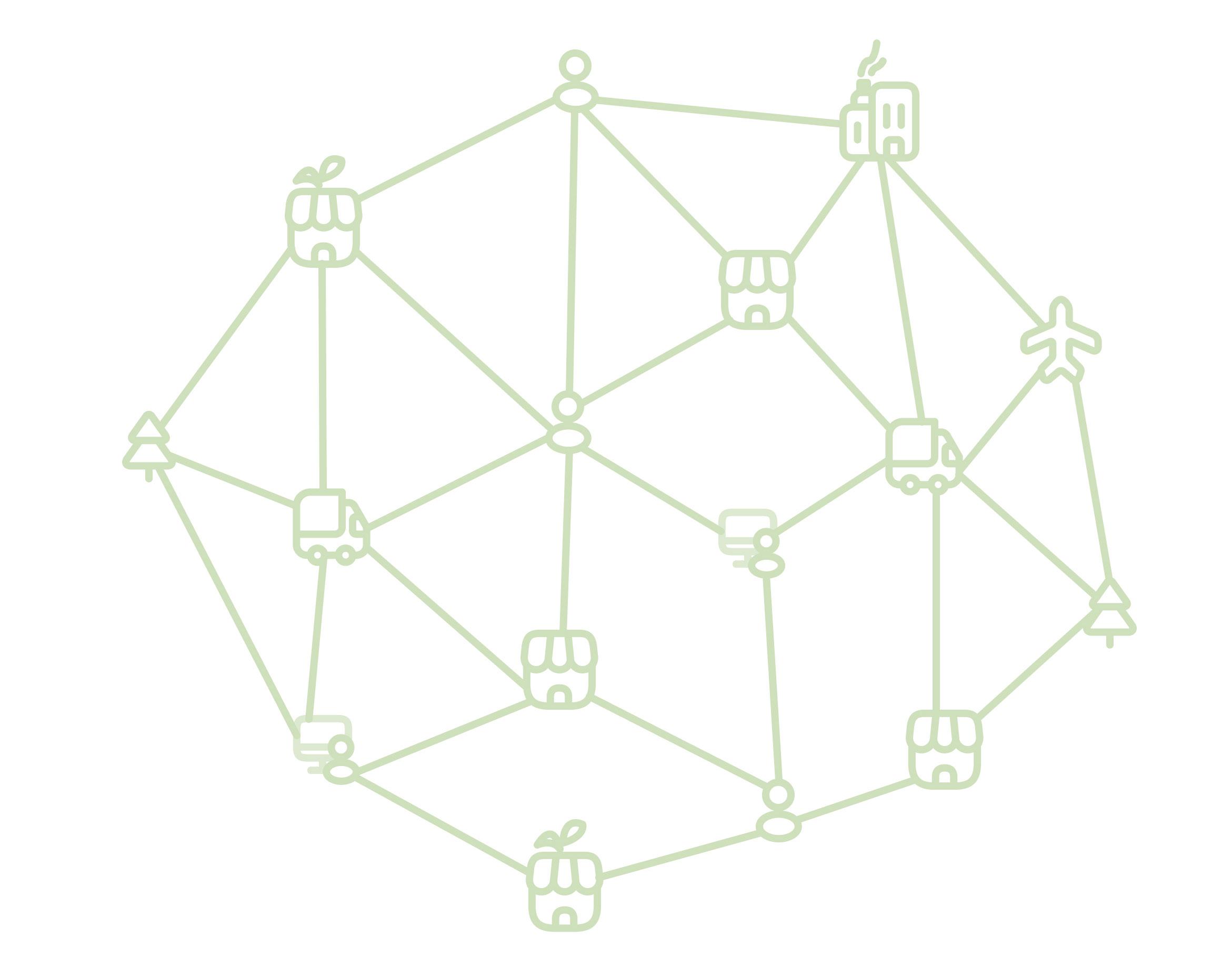
It should be noted that adopting blockchain technology still represents a strategic challenge that requires medium and long-term planning. Initially, the gap between efforts and benefits may be significant, but with the expansion of the network and the increase in suppliers wanting to participate in the supply chain, not only can set goal be reached, but future scenarios can also be opened that may exceed all expectations.
The implementation of this technology should not be considered solely to improve transparency in the agrifood supply chain, but as a tool that offers a distinctive competitive advantage for those who adopt it. This advantage is not limited to marketing and corporate image but can offer a real ‘extra edge’ in terms of operational efficiency, security, and consumer confidence.
Regarding ‘Smart Contracts’ embedded within the blockchain, it is important to emphasize that the term ‘smart’ can be misleading: smart contracts are not intelligent contracts themselves and do not involve the use of AI technology. Rather, they consist of a series of computer instructions that allow nodes to manage, accept, reject, and validate data. Although these computer programs are not inherently ‘intelligent’, they can perform ‘smart’ operations, allowing the system to react autonomously to certain situations.

Consequently, these tools are crucial in improving the efficiency of a company’s daily work, reducing the time taken by users, and minimizing potential human errors. Additionally, they simplify the management of data related to internal operational processes, thus contributing to optimizing the entire company’s workflow.
Blockchain network, by its nature of cooperation, is based on mutual cooperation, and precisely thanks to this fundamental principle, it is clear that all actors in the supply chain participating in the blockchain can be subject to a ‘computer disciplinary code’ to which they must comply.

A practical example: if a supplier were to distribute counterfeit products through a company’s internal traceability system, it would be possible to identify the problem and stop collaboration with the supplier. However, this information is limited to the company’s internal ERP environment, making it endogenous. With the implementation of blockchain technology, this information becomes exogenous, as the supplier directly inputs data into a shared, public, and immutable register. Consequently, the data becomes visible to all actors in the supply chain, ensuring greater transparency and facilitating the detection and resolution of problems. Additionally, this data cannot be manipulated and will remain accessible, constituting a crucial branch of traceability.
Likewise, the opposite is also true, if a supplier were to distribute a product of guaranteed and certified origin, the blockchain-based traceability system could confirm such information. Thanks to the implementation of this technology, there would be double validation of the data, the supplier inputs the information into the blockchain, and the various actors in the supply chain subsequently validate this information in an unchangeable manner. This ensures a secure and transparent supply chain, reinforcing consumer confidence in the origin and quality of products.


Last but not least, the decision-making process regarding order management and packaging, currently semi-manually handled by users, should be considered. With the implementation of blockchain technology and smart contracts within network nodes, this decision-making process can be delegated to the platform, making the company’s IT system even more efficient and effective.
It is easy to anticipate that in the coming years, more and more traceability data in the agrifood sector will be recorded on nodes based on blockchain technology. Consequently, not only is it plausible that this technique can offer significant benefits in multiple areas, it is likely to become the primary challenge for companies aiming for future innovation. From a personal standpoint, as a professional in the IT sector and a blockchain technology enthusiast, my personal experience leads me to think that this type of technology is not merely a method or an algorithm, but an entire management process that starts from an idea and evolves into a dense network of nodes and actors sharing strict rules for data validation.
Andrea Biagianti is the IT Manager at Certified Origins Italia. Born in Grosseto in 1978, Andrea has harbored a deep passion for computer science since childhood, which led him to pursue technical studies in his hometown and refine his expertise in Rome. During his academic journey, he developed an application for information protocol and document archiving for technical studies aiming for ISO 9001 certification. After completing his studies, Andrea embarked on his career at a software company specializing in ERP for accounting and warehouse management. He then joined OL.MA. where he developed traceability systems and designed multi-level IoT solutions for product quality monitoring. As a full-stack, multi-platform software developer with over ten years of experience, Andrea collaborates with both internal and external operational teams at Certified Origins Italia, developing advanced management and traceability systems. His ability to integrate and lead teams and coordinate the development of complex applications is particularly distinguished by his innovative use of technology. Beyond his professional career, Andrea is a passionate sports enthusiast and serves as the President of the Provincial Committee of ACSI Grosseto, a Sports Promotion Organization. He firmly believes that sports, social and cultural promotion, integration, and information exchange are essential for human development.
References:
Nakamoto, S. (2008). Bitcoin: A Peer-to-Peer Electronic Cash System. Retrieved from https://bitcoin.org/bitcoin.pdf PGI. https://en.wikipedia.org/wiki/Geographical_indications_and_traditional_specialities_in_the_European_Union PDO. https://en.wikipedia.org/wiki/Protected_designation_of_origin Swan, M. (2015). Blockchain: Blueprint for a New Economy. O’Reilly Media. (IBM, 2017) Food Trust: A blockchain-enabled solution for the food industry. (European Commission, 2018) Blockchain for a trusted and secure food system. (McKinsey & Company, 2018) Blockchain in the food industry: The next frontier for traceability. (Food and Agriculture Organization of the United Nations, 2018) Blockchain for agrifood: Innovation for a sustainable future. (Food and Agriculture Organization of the United Nations, 2020) Emerging opportunities for the application of blockchain in the agri-food industry. (World Economic Forum, 2019) 3 ways blockchain can revolutionize global supply chains (Oracle, 2019) Authenticity of protected origin or geographical indication products, Trust in every Drop. (Deloitte, 2023) The Power of Blockchain in Revolutionising the Food Industry.
BY GIORGIO BERTOLINI
Understanding the origins of our food is, in my view, one of the most insightful and intelligent questions we can pose in modern times.
This question holds significance: stemming from the root of the Latin verb “intelligere”, meaning “to comprehend”, it enables us to decipher the profound challenges of our era.
We confront a mounting global demand for food amidst the backdrop of alarming climate change and geopolitical upheavals, ranging from widespread pandemics to conflicts. The reliability, security, and quality of our food supply is now more precarious than ever.
The proportion of individuals residing in developing nations has surged from 66% in 1950 to approximately 85% today. Within these countries, there are 8 billion people reliant on food systems that are yet to establish robust food production practices and resilient healthcare systems.
Regrettably, the inquiry into the origins of food garners little interest among the global populace, representing only a minority. This
lack of engagement stems from deficiencies in cultural awareness, education, and economic means to access safe and nutritious food. It is crucial to acknowledge that 700 million people worldwide still suffer from hunger, with an additional 100 million experiencing food insecurity compared to pre-COVID levels in 2019. In an ideal scenario, these individuals would have the opportunity to contemplate the origins of their sustenance; however, many are confronted with the stark reality of insufficient food options.
Interest in the origins of our food remains confined to a niche of well-educated individuals with heightened awareness on the subject. Nonetheless, it is imperative that we continue to prioritize education on the topic, recognizing that each reader possesses the potential to catalyze positive change within the agricultural and food sectors.


“Interest in the origins of our food remains confined to a niche of well-educated individuals with heightened awareness on the subject. Nonetheless, it is imperative that we continue to prioritize education on the topic”
Our food originates from the earth.
While this may seem a simplistic response, my aim is to underscore the fundamental and authentic source of food production.
Indeed, 95% of our food derives from the earth through agricultural practices. Even animal products such as meat and dairy ultimately trace back to the earth, as animals predominantly consume cultivated grains.
The health of our food is intricately linked to the health of our soil. Healthy soil not only enhances the quality of food but also contributes to the well-being of those who consume it.
Soil serves as not only the “mother” of our food but also a vital component in combating climate change, serving as a significant carbon sink, second only to the ocean.
While agriculture and the food industry are significant contributors to greenhouse gas emissions, the adoption of best practices, such as regenerative agriculture, can transform them into positive agents of climate change mitigation.
Farmers play a pivotal role in stewarding our land and soil, and it is imperative to provide them with education and incentives to promote sustainable practices. Governments, too, must prioritize enacting simple regulations and incentives to encourage healthy soil management.
Despite progress, global pesticide sales continue to escalate at a 4% annual increase, posing threats to soil biodiversity and exacerbating land degradation. It is essential to transition towards regenerative agriculture to safeguard our lands and mitigate greenhouse gas emissions.

The geographical origin of food remains pertinent in our quest to understand its source. Supporting locally sourced products not only reduces transportation emissions but also sustains local economies and biodiversity.
Authentic local products, cultivated within specific regions over generations, contribute to local ecosystems and biodiversity.
Conversely, recent relocations of food production can disrupt ecological balances, as evidenced by the introduction of invasive species due to mass soy cultivation in certain regions.
Consumers should prioritize authentic local products while also embracing global specialties that foster cultural exchange and preserve biodiversity. However, when opting for imported goods, it is essential to support producers committed to environmentally friendly practices across all stages of production.
While logistics and packaging contribute to a product’s carbon footprint, the majority of emissions stem from production and cultivation processes.
In conclusion, our soil and earth represent invaluable resources in our pursuit of sustainable food systems and climate resilience.
By directing our efforts towards soil health and embracing innovation, we can achieve healthier, more efficient, and diverse food production systems.
Optimism persists that the future of our food origins will be characterized by health, respect for the environment, efficiency, and diversity.


Giorgio Bertolini is a manager and entrepreneur active in the sustainability and food tech industry. He is Managing Director of ClimatePartner Italia a growing organization that supports companies achieve net zero emissions and to contribute to preserve and restore nature through certified projects.

BY GIANNI BALDINI
Food fraud and counterfeiting practices are a significant concern in retail, especially when long supply chains exist and a single product travels a long distance before arriving on a shelf, and ultimately on our table.

Several “Made in Italy” brands and products are perceived as high quality and value in various sectors, including agri-food. For this reason, they are often at risk of being targeted by misleading marketing and illegal practices.
The Italian agri-food sector is considered a national heritage worth 538 billion euros and contributes 25% to the Italian GDP. It employs 4 million people in 740,000 farms, 70,000 food industries, over 330,000 restaurants, and 230,000 retail outlets (source: COLDIRETTI 2021).
For reference, in 2021 alone, the global sales of Italian-sounding agri-food products generated a turnover of 100 billion euros. Italian-sounding products employ a marketing strategy that uses words, images, color combinations, and geographical references to promote agri-food products. These brands are designed to evoke authenticity and quality even though they were made outside of Italy and have little to no link with Italian cuisine or food traditions.
To protect producers, inform retailers, and educate consumers about imitations, the European Union has established certifications supported by a legal framework of strict quality and legal regulations.
The EU Geographical Indications system protects local economies from unfair competition. It also aims to protect the environment, as the strong link with the original territory requires safeguarding ecosystems and biodiversity. Finally, it promotes social cohesion within the entire community, solidifying the pride and connection around the local specialties.
The Protected Designation of Origin (PDO) is a certification mark that confirms a product’s origin from a specific place, region, or country. It signifies that the product’s quality or characteristics are primarily or exclusively attributable to the particular geographical environment and its inherent natural and human factors. Furthermore, it ensures that all the production stages occur within the defined geographical area.
The Protected Geographical Indication (PGI) seal identifies a product from a specific place, region, or country. The product’s unique characteristics, quality, or reputation are intrinsically linked to the geographic origin. Additionally, the production must take place in the delimited geographical area for at least one of its phases.
Italy has the highest number of products with geographical indications and designations of origin in the EU among its member states, 316, with an additional 526 wines certified with a DOC and IGT seal. This is further evidence of the high quality of Italian productions and the vital link between Italian agri-food excellence and their original territory.
In recent years, people have become increasingly aware of the products they consume. They tend to prefer items that are authentic, healthy, and have a clear origin. Additionally, individuals are interested in establishing a connection with the cultural identity of the places where these products come from.
It’s worth noting that in 2021, authentic Italian agri-food continued to demonstrate its value to consumers worldwide. Exports have increased 12%, bringing the total value to an impressive 52 billion euros. This is partly due to mandatory and voluntary regulations, which help reduce risks for both consumers and companies.
The traceability of food products, once considered an internal need for companies, is now a legal requirement and a strategic necessity for the agri-food supply chain. For Italian companies and brands that still want to certify the authenticity of their products, for productions that generate important volumes and depend on longer supply chains, outside of the scope of Geographical Iindications, luckily other solutions are available.
The rise in popularity of other traceability certifications, such as ISO 22005:2007, can be attributed not only to legal requirements but also to the additional benefits they offer for the finished product, companies involved in the production, and all participants in the supply chain. A third-party traceability certification is a valuable tool for preserving culture and tradition while ensuring the quality and uniqueness of products. As a result, it helps build trust among all stakeholders, including distributors and consumers.
ISO 22005 is a supply chain traceability standard adaptable to different sectors, including feed, meat and food, oil, wine, and other products. It aims to help companies document their products’ history, making it possible to trace their origin and location at any time.
It can be employed to cover the entire supply chain or specific sensitive areas in need of additional monitoring. When used throughout the entire supply chain, this standard is often necessary to prove the origin of each product and raw materials used.
Supply chain actors are increasingly emphasizing transparency, certifications, and supplier reliability to demonstrate their commitment to product quality and safety.
Ensuring food safety is crucial to protecting public health. The globalization of markets and complex production processes require regulating all aspects of the food chain, from the organization of exchanges to production methods, to ensure its safety and wholesomeness.
However, contamination of the food chain can still occur due to naturally occurring or accidentally introduced pathogens or incorrect procedures.
Traceability is crucial in today’s food industry, as it responds to consumers’ demands for food safety and helps to share responsibilities among supply chain actors. It is also a valuable tool to enhance competitiveness and rationalize production systems, thereby improving the quality of agri-food production.
ISO 22005 is designed to simplify a company’s organization, combining internal processes to implement a traceability management system in agri-food supply.
A certified and transparent supply chain can assist companies and brands in fulfilling their legal obligations, highlighting the unique characteristics of their products, such as their origin or territory, showcasing the particular features of their ingredients, and meeting the expectations of their customers, whether they are retailers or end consumers.


IFS FOOD - Standard for auditing product and process compliance in relation to food safety and quality
IFS LOGISTIC - Standard for auditing logistics services in relation to product safety and quality
IFS BROKER - Standard for auditing Trade Agencies’ Importers’ and Brokers’ service compliance in relation to product quality and safety Standard for auditing Trade Agencieselation to product quality and safety
BRCGS FOOD - Global Standard Food Safety
BRCGS PACKAGING - Packaging Materials Food Safety
FSSC22000 - Scheme Food Safety Management System
ISO 22000:2018 - Food Safety Management System. Requirements for any organization in the food chain
RSPO - Roundtable on Sustainable Palm Oil: Supply Chain Certification Standard
GLOBAL GAP - Voluntary standards for the certification of agricultural products worldwide
ORGANIC CERTIFICATION - REG.EU 848/2018
FOOD WASTE MANAGEMENT SYSTEM - Private Standard of BUREAU VERITAS HOLDING

“In recent years, people have become increasingly aware of the products they consume. They tend to prefer items that are authentic, healthy, and have a clear origin.”

Gianni Baldini is a Food Sector Manager at Bureau Veritas Italia - Certification division. He has been working in the agri-food sector for over 30 years as an expert in food safety and management of animal and vegetable supply chains. Since 2004, he has been a consultant and auditor for all voluntary certifications related to the sector. In 2012, he ended his consultancy activities and joined the Bureau Veritas Italia Group, where he has been responsible for the food certification sector since 2015.
BY PETER CROCE
Foods are inseparable from their place of origin. Around the world, special local climate conditions and cultural traditions combine to produce special flavors. People look to labels to identify foods from specific locales.

Systems for labeling foods by origin have existed for thousands of years. Around 7000 years ago, the first such recorded system identified the production location of two kinds of cheese in Egypt, according to Cheeses: A Global History by Andrew Dalby. In modern times, there are appellations: systems to legally certify that certain foods come from particular places and are produced in traditional ways.
In Spain, where olive cultivation began over 3000 years ago and about half of the world’s olive oil is produced, there are 32 protected designation of origin (DO) extra virgin olive oils from specific regions. The first DO oil on the Olive Oils from Spain website is Aceite Campo de Calatrava, from the Ciudad Real province, where, the website reports, local producers
make oils that are full and intense, and with fruity profiles from olives selected at the optimal moment of ripeness.
Stable climate conditions supported this luscious harvest for millennia. Unfortunately, in the last few years, hot and dry weather in Spain interrupted the delicate process of cultivating olives. Let’s look at the Ciudad Real region to understand more about the conditions olive oil producers have experienced there.
The map below shows the likelihood of drought lasting more than a year in southern Spain in a 1°C warming scenario, which was around 2017. Drought is a temporary state of dryness that represents a deviation from the historical norm. It is a way to understand the stress of dryness on local ways of life and plants adapted to a region. The moderate drought seen here historically happened about 20% of the time, but by 2017 it happened about 30% of the time.
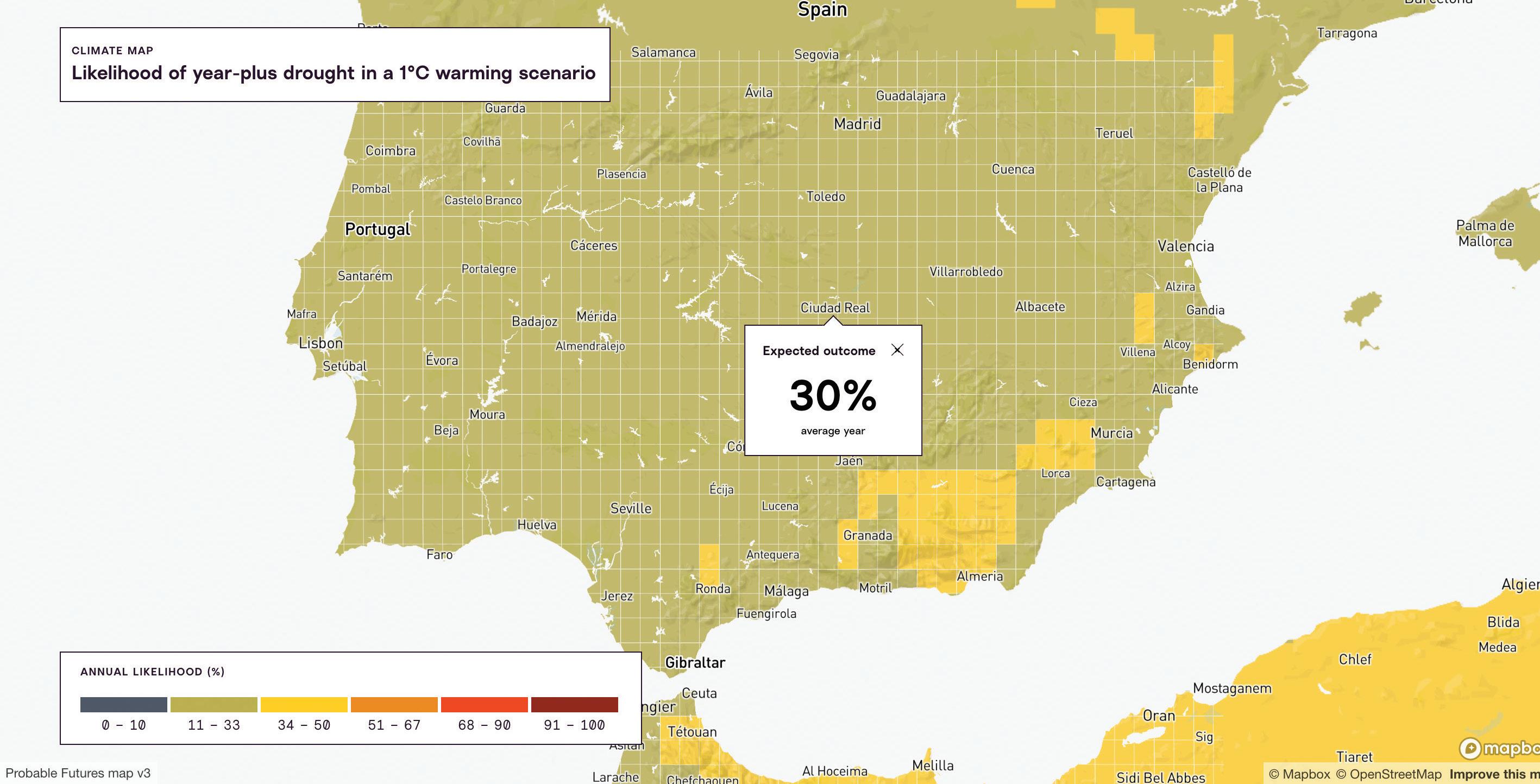
For thousands of years, this region’s climate was a delicate balance: warm but not too warm, and dry but not too dry. Because warmer air holds more water than cooler air, heating pulls moisture into the air, away from everything else.
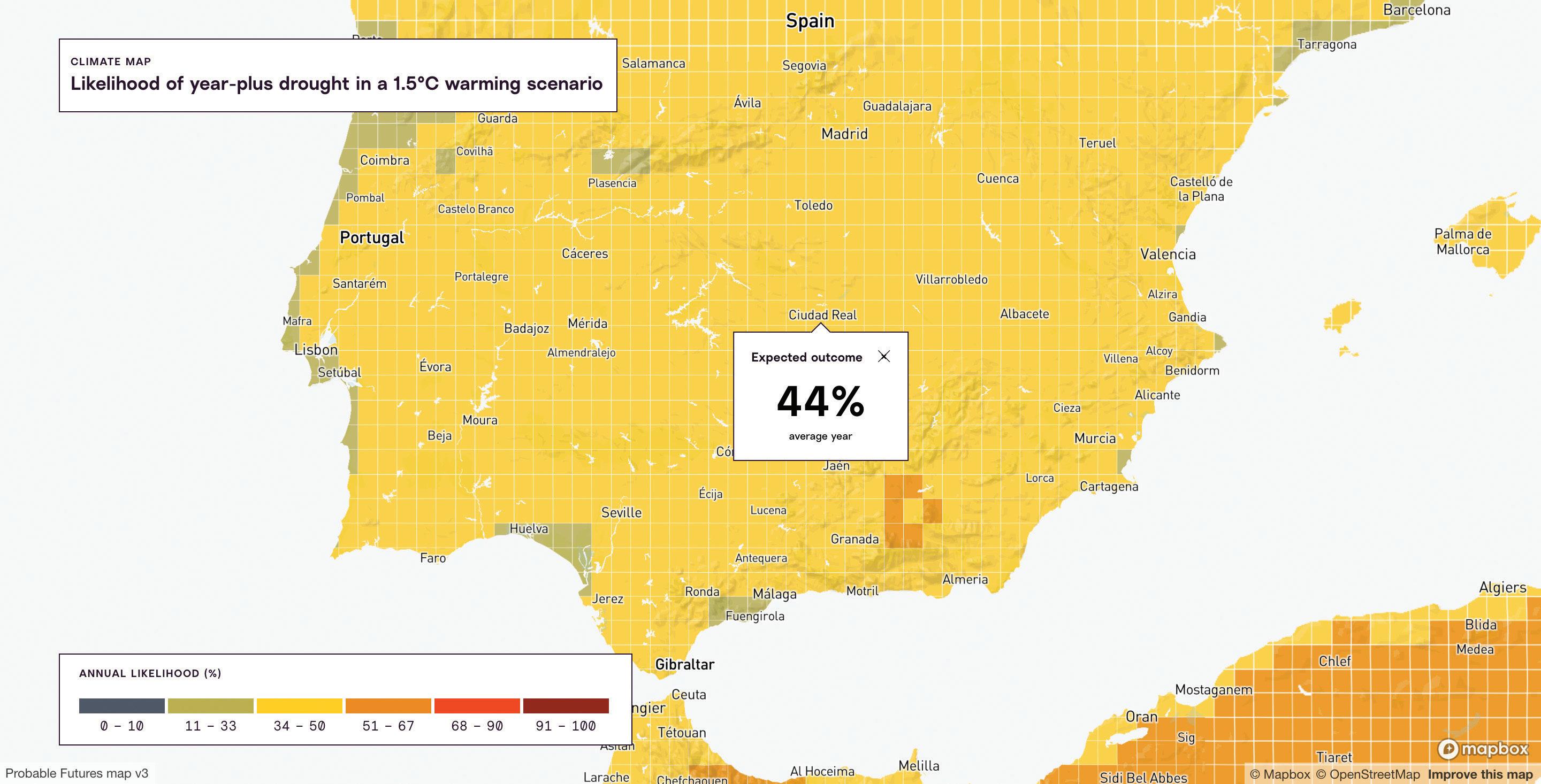
Global warming at just 1.0°C above the historical average elevated the risk of drought from 20% to 30%. Additional warming to 1.5°C, a global average temperature which was breached for the first time last year, raises the risk to 44%, as seen on the map above. This means drought should be expected nearly every other year.
Spain is not experiencing the same conditions it did for the thousands of years since olive cultivation began, nor when the first DO was
created in 1925; already, harvest yields have diminished. What are the implications for olive oil and other protected foods in Spain?
Until recently, maps like the ones above were not publicly accessible and easy to use. With Probable Futures maps, anyone can look ahead to future conditions and prepare. What conditions should other places with protected foods expect now and in the future? Let’s look at Italy.
Denominazione di Origine Protetta (DOP) in Italy is another well-known appellation. The Italian ministry for agriculture website provides a definition of DOP:
“A product originating from a specific geographic area, which determines its quality and characteristics and in which the phases of its production take place.”
DOP-certified San Marzano tomatoes are famously grown only in an area around Naples, where consistent humidity and ample water coincide with rich volcanic soil. Sicily produces rich agricultural products of all kinds. The river valleys in northern Italy are
known for their lush growing seasons, olive oils, and wines.
All of these places rely on predictable rainfall and temperature patterns. But in the last several years, these areas began experiencing hotter and drier conditions. Could producers look ahead to expected future conditions, prepare to operate in those conditions, and reduce the loss of harvests in the future?
The map below shows the number of days above 35°C (95°F) in a historic climate, between the 1970s and 2000. In the area where DOP-certified San Marzano tomatoes are produced, about a week (9 days) above 35°C could be expected in an average year, and about a month (32 days) in a warmer year.
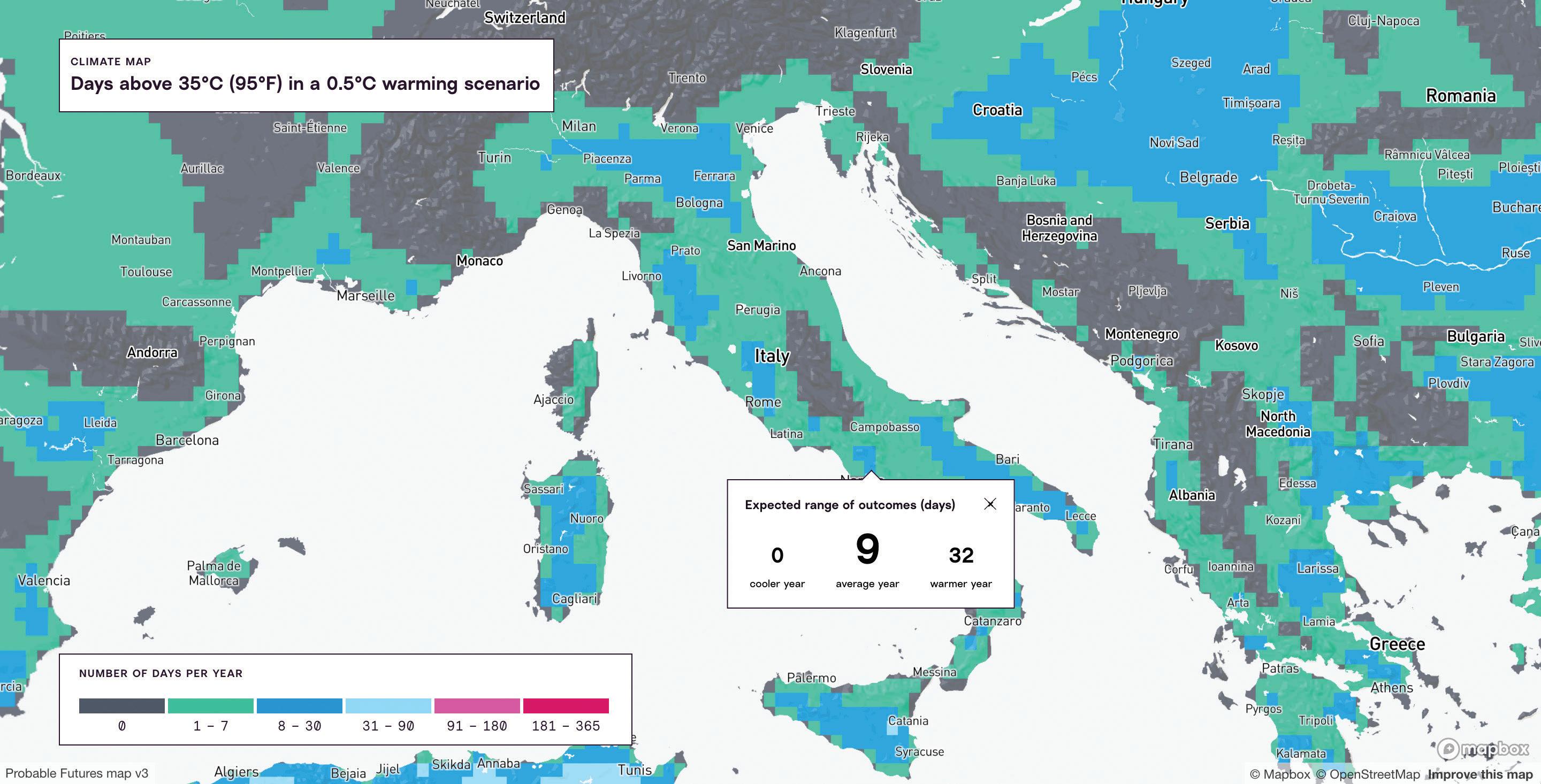

The next map shows a 2°C warming scenario, which is the global average temperature expected to be reached around the 2040s. In this world, producers of San Marzano tomatoes would experience about a month (28 days) of days above 35°C (95°F) in an average year, and two months (61 days) in a warmer year.
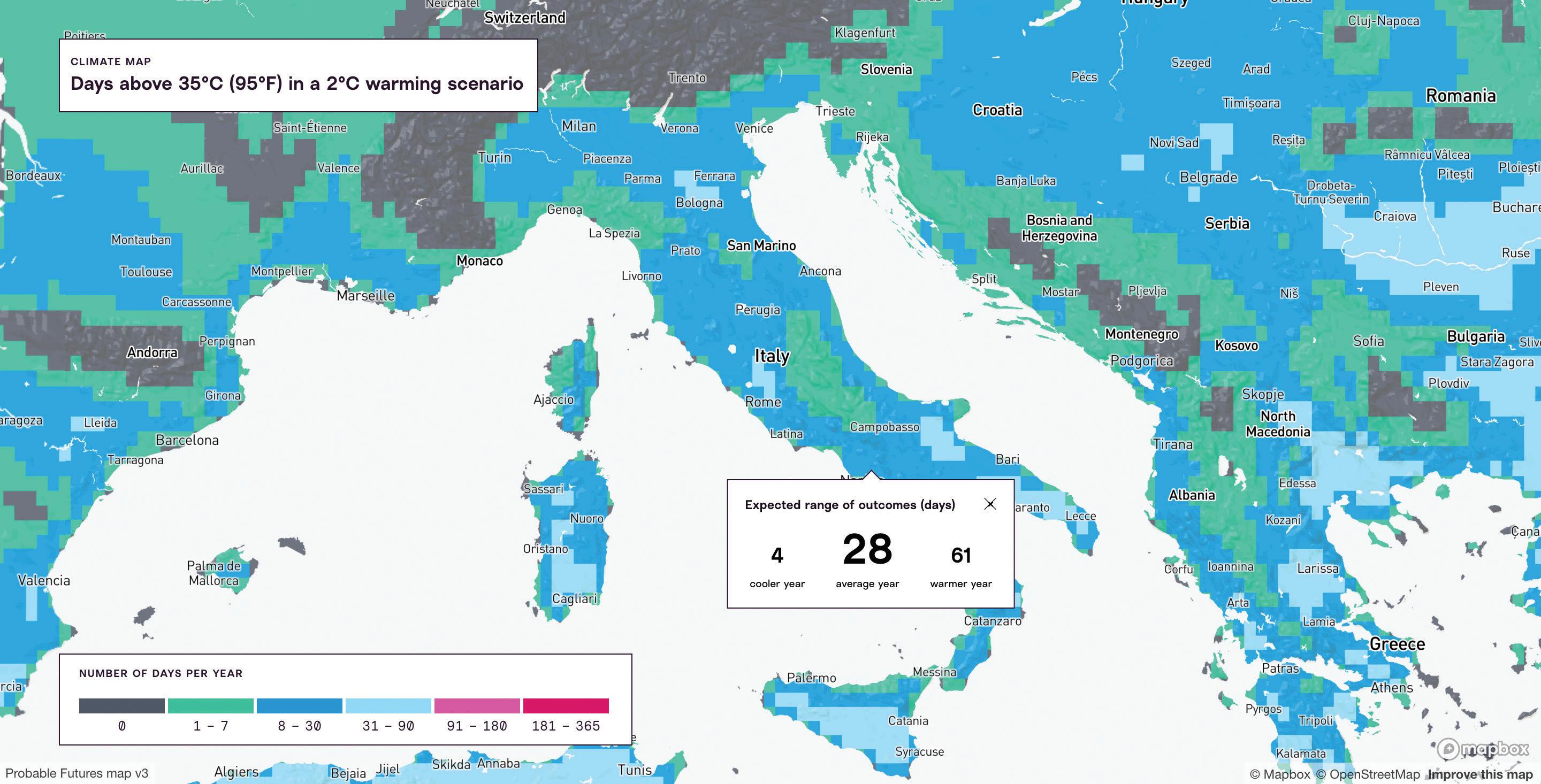
Days above 35°C (95°F) in Italy in a 2°C warming scenario, expected in the 2040s at the current rate of global warming. Map from probablefutures.org/maps
The Mediterranean is becoming drier as it gets hotter. Producing food in the future will require new adaptations combined with traditional knowledge about the foods that have thrived there in the past.
What would happen to foods from designated areas if local conditions change too drastically? The loss of these tastes and textures and the traditional ways of producing them would be a monumental tragedy.
Thankfully, for many foods, conditions have not yet changed enough to halt production, but changes are happening quickly. Now is the time for experienced producers to explore expected future conditions and plan to adapt accordingly.
Equipped with knowledge of the future, producers of protected foods around the world have an opportunity to preserve their traditions for future generations to enjoy.
From my plate to yours: here’s hoping they do.
Sources www.mardeolivos.co.uk
www.oliveoilsfromspain.org
www.bbc.com
www.dopigp.politicheagricole.gov.it
“Could producers look ahead to expected future conditions, prepare to operate in those conditions, and reduce the loss of harvests in the future?”


Peter Croce leads the digital product team at Probable Futures, speaks to public audiences, and builds partnerships to help people live well and act with confidence in our changing world. Probable Futures makes climate literacy resources and climate maps available online for everyone, everywhere. To begin exploring, visit probablefutures.org. The maps included in the article, and many more, are available at probablefutures.org/maps.
